Page
South Africa is sitting on a retirement time bomb, with only 6% of the country’s population on track to retire comfortably. This is according to the sixth edition of the recently released 10X Investments Retirement Reality Report 2023/2024.
The report is based on the findings of the 2023 Brand Atlas Survey. Brand Atlas tracks and measures the lifestyles of the universe of 15,4 million economically active South Africans –defined as those living in households with a monthly income of more than R6 000, aged 16+, with internet access, through online completion surveys.

IMAGES Shutterstock .com
Page
think again. Investors should all be considering making ESG an integral and strategic part of long-term investments.
Pg 2 3
This year’s survey shows that there has been little fundamental change in South Africans’ inclination or ability to plan for retirement in comparison to findings from last year’s report. The 10X Investments Retirement Reality Report 2023/2024 found that the majority of South Africans have not formally planned for retirement, and those who have planned are not confident they are on track to be able to support themselves for the long term, considering inflationary pressures and the economic climate. This comes at a time when half of the South African adult population (49.2%) is living below the poverty line, according to Stats SA.
“29% of people over 50 indicated that their plans were ‘definitely not’ or ‘probably not’ on track”
points, recovered to about -10 points in 2021, but dropped again, hovering around -20 points in 2022 and the first half of 2023.
are key to closing the expectationreality gap – in their long-term interests South Africans need to be better informed on the importance of saving, the power of compound interest, the consequences of not saving, the additional disadvantages that women need to overcome, and the impact of costs,” says Van Heerden.
Planning for retirement
About half of respondents who had a retirement plan indicated that their plans were ‘probably’ or ‘definitely’ on track, with some variation across age groups. Significantly, 29% of people over 50 indicated that their plans were ‘definitely not’ or ‘probably not’ on track. According to 10X, it is extremely difficult to correct any deficit in savings after reaching 50, and requires at least 30%-40% of a monthly salary to be invested into retirement savings in order to comfortably retire.
Consumer confidence, as measured by the FNB/BER Consumer Confidence Index, has been negative since the last quarter of 2019. When Covid-19 hit, it dropped to a record -33
Tobie van Heerden, Chief Executive Officer for 10X Investments, says that in comparison to 2022’s survey, the 2023/24 report found an increase in the number of people recognising the importance of having a retirement plan in place. “The difference between what South Africans expect their retirement to look like and the realities faced by those in retirement and approaching it, cannot be underestimated. Knowledge and information
Almost three quarters of respondents (72%) whose plans were not on track gave ‘I am not able to save enough’ as a reason. This ties in with reasons given for not having a retirement plan in the first place: 70% of respondents without a plan agreed with the sentence: ‘I cannot afford to save, I have nothing left over at the end of the month’.
Continued on next page

www.moneymarketing.co.za @MMMagza @MoneyMarketingSA First for the professional personal financial adviser INSIDE YOUR MARCH ISSUE 31 March 2024 The value of investments may go up as well as down, and past performance is not necessarily a guide to future performance. There are risks involved in buying or selling a financial product.For any additional information such as fund prices, fees, brochures, minimum disclosure documents and application forms please go to www.lauriumcapital.com. Laurium Capital (Pty) Ltd is an authorised financial services provider (FSP 34142). www.lauriumcapital.com Compound your investment tax-free through one of Laurium’s Tax-Free Savings Accounts: • no lockups, • no tax, • no performance fees. Investing for your future C M Y CM MY CY CMY K MoneyMarket_Feb 2024 Tax free.pdf 3 2024/02/21 12:40:29 Majority of cash-strapped South Africans unable to retire comfortably BUDGET SPEECH Despite its reflection of SA’s economic difficulties, the 2024/24 Budget also holds opportunities for FAs.
9
10 LISTED PROPERTY Is now the time to view the listed property sector in a whole new light? We speak to some experts to get the views on the benefits of plunging into this asset class.
-
12
15 ESG INVESTING
you thought it was just a fad, it’s time to
-
If
1 CONTINUOUS PROFESSIONAL DEVELOPMENT


Westbrooke Yield Plus Plc is an open-ended Jersey Expert Fund which provides investors with a high-yielding, fixed income alternative investment, through a diversified portfolio of approximately 50 secured UK loans. With a track record of over 5 years of performance, the Fund provides a unique investment advantage driven by an asymmetric risk / return profile. Invest with the Westbrooke Advantage. westbrooke.com pr ivate debt hybr id capital real estate pr ivate equity Westbrooke is a registered financial services provider. T’s & C’s apply * Based on current run-rate returns, which are not guaranteed Invest in UK Private Debt with Westbrooke before 27 March 2024 Alternative Asset Management twice your cash yield with a downside shield Earn 9.5%+* p.a. in £ through a diversified portfolio of 50+ secured UK loans Scan to learn more


Continued from page 1
According to Van Heerden, the survey responses underline the harsh economic realities for most South African consumers. “Year after year, we are seeing a large proportion of respondents that have been partially or strongly of the view that they will need to continue earning a living after their formal retirement date.” Of the respondents who do have a retirement plan, only 37% could give a definitive answer on the costs, as an annual percentage of assets, of their retirement investments. Another 37% had no idea what the costs on their investments were; 13% believed that the fee depended on performance; while 13% believed they were not being charged at all.
contributions of up to 27.5% of your annual remuneration.
The retirement industry and National Treasury have long been concerned about the high proportion of working people who cash in their retirement savings when they change jobs. This is reflected in the survey: 10% of respondents say they cashed in, whereas a lower number (8%) preserved their savings. To put it another way, 56% of respondents leaving a retirement fund did not preserve their savings. In the 2021 survey, this percentage was 56%, and in 2022 it was 59%, suggesting that efforts by the retirement industry and the government to encourage employees to preserve their savings are not having the desired outcomes.

When will you retire?
Younger people believe they will retire younger, whereas those aged 55 all agree they will need to retire later – big disconnect. It may be natural for active, younger people to visualise themselves never stopping working (20% of people between 16 and 24 years old); 17% of respondents older than 50 indicated they did not plan on retiring, pointing to a lack of planning and the necessity to continue working for a living.
Although the percentages are low, more respondents below 35 than those of 35 or older indicated they plan to retire before turning 60. This may be attributed to the idealism of youth and a lack of awareness among younger people on what it takes in the way of planning and savings to retire comfortably.
Occupational retirement plans
Many people in formal employment belong to an occupational retirement fund, and for a large proportion of them this is the only form of retirement savings they have. This system has the advantage that you are forced to save, because contributions are deducted from your salary automatically. Another advantage is that your contributions are tax deductible: you pay no tax on
Women’s financial health
Over the years, women have consistently been rated lower than men in most metrics concerning financial wellbeing and retirement planning. Half (49%) of all female respondents to the survey indicated they do not have a retirement plan, compared with 43% of men. More than double (11% versus 5%) the number of men said they were diligently following a well-conceived retirement plan.
Women tend to save more than men (30% of women versus 26% of men), while men tend to invest more (24% of men versus 14% of women). According to the report, although a prudent, cautious approach to investing is admirable, it may ultimately be to women’s detriment, as only higher-risk investments, such as listed equities, can deliver inflation-beating growth over the long term.
Stagnant GDP, large-scale retrenchments, and the impact of COVID-19 have resulted in people increasingly changing their jobs. According to the Retirement Reality Report 2023/2024, 56% of working people changing jobs admitted to cashing in their retirement savings.
Retiring on own terms
Fewer people can retire on their own terms. In the 2021 report, this figure was 70%; this year it had dropped to 60%, one of the most significant statistics to come out of the survey. Van Heerden says, “This trend reflects the challenging economic times we are living in, indicating a rise in employers compelling their older workers to take early-retirement packages.”
Only just over a third (35%) of the retirees who had saved for retirement indicated they were ‘fairly’ or ‘very confident’ that their savings would last. Notably, two percent of retirees indicated they had already run out of savings, meaning they were relying either on family or state support.
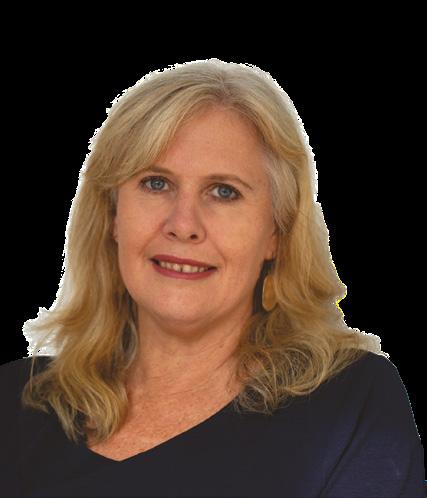
WEDITOR’S NOTE
e’ve all known for some time that South Africans are not adequately prepared for retirement. The latest edition of the 10X Investments Retirement Reality Report confirms this. It’s a dire state of events, with an ageing population that hasn’t planned properly for a future beyond their working years. It comes down once again to reinforcing the education of the younger generations on the importance of saving for their future – but in an economic climate where people are struggling to put food on the table, there’s not much left to put away. In addition, getting young people to think about a world so many years away, instead of focusing on instant gratification, can be almost impossible. Then there’s the impending Two Pot System, which Minster Enoch Godongwana has said will be implemented in September. While it may be beneficial for tax collection, we can only speculate at this stage how this will impact the long-term retirement situation.
One of our main features this month looks at SA Listed Property, which was the top-performing asset class on the JSE last year. Property has always been a tricky investment, with some potential investors showing reluctance, but could this perhaps be the year to take the plunge and reap the benefits of an asset class that seems set to perform even better this year? We take a deeper dive into listed property and get some industry expert opinions on the trends to look out for.
As promised, we’re continuing to look at the impending NHI and its potential impact on the health industry. I had an interesting interview with Devan Moodley, Regional Manager Healthcare at NMG Benefits, where he suggested that it was perhaps time to reframe the discussions around the NHI. He has some fascinating insights. Read all about it on the inside back page of the magazine.
We’ve also got some reflections on this year’s budget, with a few industry players looking at the key take-outs and how these can affect FAs – as well as what opportunities can be seized upon.
Happy reading,
SANDY WELCH Acting Editor, MoneyMarketing

P a g e 3 NEWS & OPINION 31 March 2024 www.moneymarketing.co.za 3
10X Investments (Pty) Ltd is a licensed Financial Services Provider #28250 and S13B Pension Funds Administrator #24/444. CallingFinancial Advisors CallingFinancialAdvisors AProfileData/FEfundinfojointventure ForfurtherinformationpleasecontactTraceyWiseon079-522-8953oremail:tracey@profile.co.za www.profile.co.za/analytics.htm BrandedreportingandPortfoliomodellingatyourfingertips FundResearchComparison&AnalysisPortfolioModellingPresentations&Reports
SANAN PILLAY PORTFOLIO MANAGER AT SANLAM INVESTMENTS MULTI-MANAGER
How did you get involved in financial services –was it something you always wanted to do?
I’ve always wanted to work in financial services, but it did take me some time to find the niche that was best for me. I had been on the accounting path at university, but after doing a vacation programme at Sanlam Investments, I realised that I was attracted to the dynamism and shifting challenges of the investments space. I joined the Sanlam Investments Multi-Manager graduate programme, first as an analyst on certain business projects before transitioning into the investment team. I find the investment profession very rewarding, as I am constantly learning and problem-solving to the benefit of our clients.
What was your first investment –and do you still have it?
My first investment was an investment in PSG shares, which I made while I was in high school. With professional hindsight, this was a risky move, as I had not done the type of thorough analysis that good equity investing requires; I had invested simply because I liked Jannie Mouton’s investment philosophy and the story behind his business. I was fortunate that this investment would increase in value substantially in the subsequent years. I eventually sold the investment to fund my further education.
What have been your best –and worst – financial moments?
My best financial moment has been my decision to maximise my retirement contributions at the beginning of my career. I credit my first boss for this advice, as he told me that I might feel a ‘pinch’ in the beginning as I save more and spend less, but that it would be the best thing for me in the long term. My retirement savings are now the largest component of my overall savings, and I get a tax refund every year due to the tax deductibility of retirement fund contributions. My worst financial
moment would be not fully taking advantage of the sharp market drawdown that occurred in early 2020. I had some capital to invest at the time, and traditional investing wisdom is to be greedy when others are fearful. However, I chose to invest my money conservatively, despite recognising that the degree to which local assets were being sold off meant that some mean reversion was quite likely. I ended up missing out on a large part of the subsequent recovery that occurred. It was a valuable lesson in trusting one’s own knowledge and insight.
What are some of the biggest lessons you’ve learnt in and about the finance industry?
To be successful in this industry one needs to regularly ‘look up’ from one’s work to read and learn about the broader world. Many of the major events that have impacted markets in recent years, such as pandemics and geopolitical conflicts, originated from outside the financial space. I believe people with a natural curiosity about the world are often better positioned to react to risks that come from outside their domain of expertise. Another key lesson is that this industry has no shortage of very smart people, so being smart is not a competitive advantage. One needs to work consistently and always pursue self-improvement to separate oneself from the pack and succeed in the long term.
What makes a good investment in today’s economic environment?
Key concerns in today’s economic environment include high levels of pessimism regarding local assets, and an uncertain economic outlook wherein the precise path of inflation and interest rates is difficult to forecast. A good investment would be an investment with a fund manager that has a good track record of adapting their positioning to their environment, and who looks beyond the day-today news flow to select good opportunities based on the fundamentals and a longer-term view.

What finance/investment trends and macroeconomic realities are currently on your watchlist?
An investment industry trend that I’m keeping an eye on is the gradual ‘retailisation’ of alternative assets.
A broader range of investors are now able to access alternative asset classes that were previously only accessible to large institutions and high-net-worth individuals. The unique characteristics of alternatives, along with their increased accessibility, mean that investment professionals now have a broader range of potential solutions they can build to assist their clients in reaching their financial goals.
A macroeconomic trend that I’m watching is the performance of emerging market assets. Emerging market equities have underperformed developed market equities for an extended period, and relative performance tends to work in cycles.
What are some of the best books on finance/ investing that you’ve ever read, and why would you recommend them?
Niall Ferguson’s The Ascent of Money explains the origin of our global financial system and its various components, such as the equity and bond markets. Understanding history helps us to understand how things came to be the way they are in the present, and having a deeper understanding of the present helps us to make better decisions about the future. Antifragile by Nassim Taleb is an excellent book for those looking to better understand risk and the role that it plays in our lives. The identification of opportunities is the more interesting part of investing, but the best long-term investors are often those who understand the importance of managing their risk effectively. Taleb’s book broadened my understanding of what risk looks like and how to manage it.

NEWS & OPINION 4 www.moneymarketing.co.za IMAGES Shutterstock .com Earn your CPD points The FPI recognises the quality of the content of Money Marketing ’s March 2024 issue and would like to reward its professional members with 1 verifiable CPD points/hours for reading the publication and gaining knowledge on relevant topics. For more information, visit our website at www.moneymarketing.co.za
1 CONTINUOUS PROFESSIONAL DEVELOPMENT Sanlam Multi Manager International (Pty) Ltd is approved as a Discretionary Financial Service Provider in terms of the Financial Advisory and Intermediary Services Act, 2002. Sanlam Investments consists of the following authorised Financial Services Providers: Sanlam Investment Management (Pty) Ltd (“SIM”), Sanlam Multi Manager International (Pty) Ltd (“SMMI”), Satrix Managers (RF) (Pty) Ltd, Graviton Wealth Management (Pty) Ltd (“GWM”), Graviton Financial Partners (Pty) Ltd (“GFP”), Satrix Investments (Pty) Ltd, Amplify Investment Partners (Pty) Ltd (“Amplify”), Sanlam Africa Real Estate Advisor Pty Ltd (“SAREA”), Simeka Wealth (Pty) Ltd and Absa Alternative Asset Management (Pty) Ltd (“AAM”); and has the following approved Management Companies under the Collective Investment Schemes Control Act: Sanlam Collective Investments (RF) (Pty) Ltd (“SCI”), Satrix Managers (RF) (Pty) Ltd (“Satrix”) and Absa Fund Managers (RF) (Pty) Ltd. Sanlam is a full member of ASISA. Please note that past performances are not necessarily an accurate determination of future performances, and that the value of investments/collective investment units/ unit trusts may go down as well as up. The information in this article does not constitute financial advice. While every effort has been made to ensure the reasonableness and accuracy of the information contained in this document (“the information”), the FSPs, their shareholders, subsidiaries, clients, agents, officers and employees do not make any representations or warranties regarding the accuracy or suitability of the information and shall not be held responsible and disclaim all liability for any loss, liability and damage whatsoever suffered as a result of or which may be attributable, directly or indirectly, to any use of or reliance upon the information.

Private markets outlook –it’s time for optimism
BY DR NILS RODE Chief Investment Officer, Private Assets, at Schroders
Following a phase of very strong fundraising during the pandemic, 2023 marked a period of slower capital raising for many private asset classes. We now see private markets having largely reverted to pre-pandemic levels in terms of fundraising, investment activity, and valuations. However, noteworthy exceptions include large buyouts in private equity, where fundraising has remained vigorous – a concern as it results in higher dry powder and entry valuations. Moreover, fundraising for infrastructure and venture capital has seen a significant downturn, and real estate valuations have undergone strong corrections in some regions and market segments.
It is time for optimism
Developed markets have made remarkable strides in bringing inflation closer to policy goals, with a considerably lesser impact on growth, notably in the US, than markets had anticipated. While potential uncertainties arise from geopolitical risks and muted growth expectations for 2024, we believe it’s time to
be optimistic about the potential for private market investments, given that private market conditions have largely normalised (with a few exceptions).
Private markets offer the advantage of diversification across risk premia, access to investments with defensive characteristics, and exposure to 3D Reset themes: deglobalisation, demographics and decarbonisation, as well as the AI revolution. Many of these trends will favour specific investment categories, including sustainability and impactaligned investments, renewable energy, generative AI, and investments in India.
Simultaneously, some of these themes are inflationary, contributing to higher
“We’re also drawn to strategies with higher capital needs due to the retreat of traditional capital providers, such as real estate debt”
interest rates. Coupled with funding gaps created by regulatory capital limitations on banks, we anticipate this will generate appealing lending opportunities.
Capital flows: A contrarian indicator
Many private market strategies operate as closed systems where fundraising determines the amount of available dry powder, which subsequently influences entry valuations and ultimately investment returns. Therefore, we favour strategies with stable fundraising dynamics, such as small/mid buyouts, and see potential in strategies where fundraising has significantly deviated below its long-term trend, like infrastructure equity and venture capital. We’re also drawn to strategies with higher capital needs due to the retreat of traditional capital providers, such as real estate debt, insurancelinked securities, specialty finance, microfinance, and private credit.
Selectivity remains key
Many current private investments involve ‘re-ups’, or reinvestments with
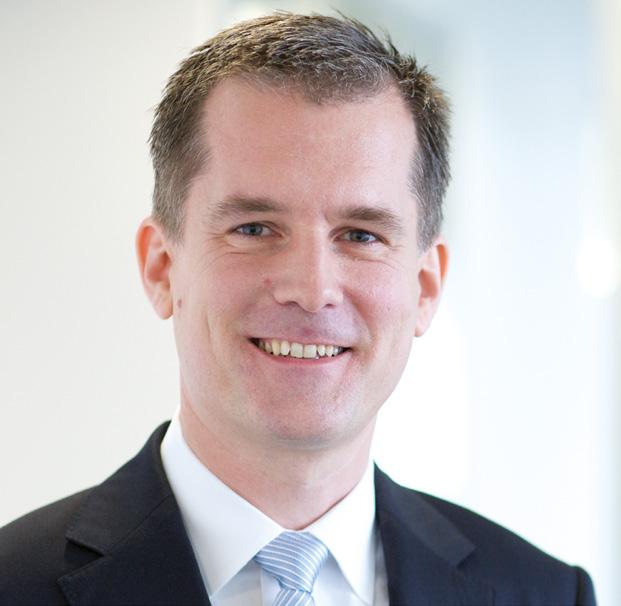
existing partners. The pandemic has amplified this trend as due diligence on new strategies and meeting new managers posed a challenge.
Considering the new market dynamics driven by the 3D Reset and the AI revolution, we believe it’s crucial to question whether past successes can be replicated. Are existing partners and strategies well-positioned for today’s trends (decarbonisation, deglobalisation, demographics, and the AI revolution)? Are the fundraising and dry powder dynamics within the sub-sector healthy? Given the changes in market dynamics, it’s likely that opportunity sets should also evolve.
Now, more than ever, it’s vital to expand investments into opportunities that benefit from these transformative trends and policy changes, diversify a private allocation as it matures, and concentrate on areas with healthy fundraising dynamics that provide access to less efficient markets and opportunities.
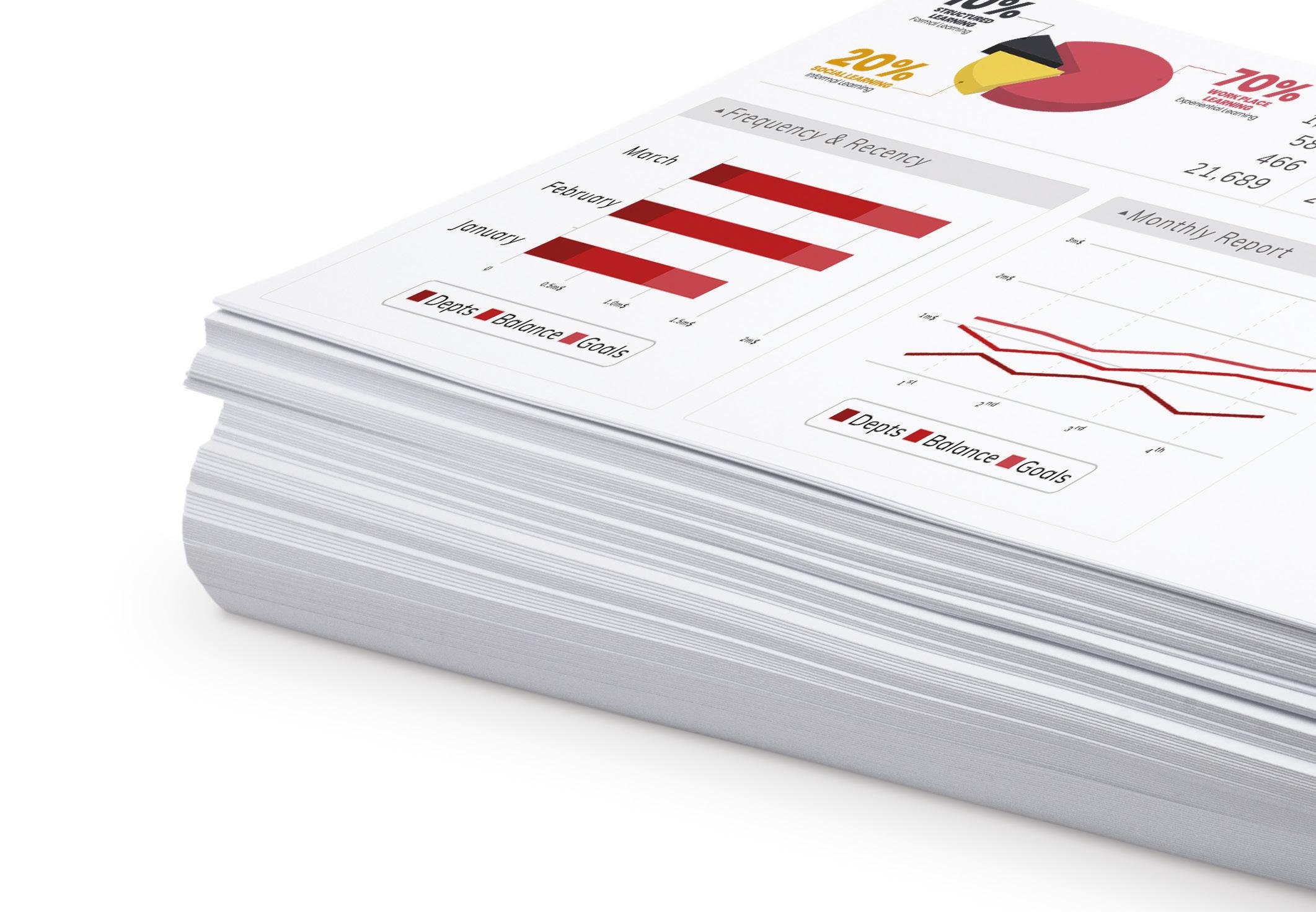

NEWS & OPINION 31 March 2024 www.moneymarketing.co.za 5 IMAGES Shutterstock .com Business to the power of people Spreadsheets don’t secure investments. People do. Unlock business success by hiring the right people. Access SA’s largest jobseeker database with over 6 million candidates, ensuring effortless recruitment. Visit pnet.co.za to learn more. PNET_Print_220mm x 80mm.indd 1 2024/02/12 09:32
South Africans are living hand-to-mouth
BY BRINA BIGGS Senior Manager at 1Life Insurance
Due to the drastic changes in the economy over the past two years, South African consumers’ financial realities and concerns have also changed. For many, getting by has become a priority, while investments and building wealth have taken a back seat.
In late 2023, 1Life undertook its third annual 1Life Generational Wealth Survey, and the most notable stat is that over 57% of respondents feel that they are just surviving, with continuous anxiety over meeting their monthly expenses, which is testament to the increased cost of living that is burdening South Africans.
Top of the list is household expenses – with over 51% of respondents having to worry about how they will meet their monthly household expenses such as rent, home loans, rates, and utilities, followed by whether they will be able to adequately support their families, the survey reveals. This comes as no surprise , given that the Monetary Policy Committee has increased the interest rate eleven times since November 2021, and the repo rate reaching a 14-year high of 8.25%. The survey further uncovers that
31% of respondents have started a side hustle or second job to make ends meet; however, 73% of them still have to use their savings and investments to get by.
The reality is that while the situation may already be at its worst for many consumers, the economic situation may not improve anytime soon. With job cuts and the increase in inflation in the past two years, many families are living hand-to-mouth, with no means to save for emergencies, let alone build generational wealth for their families.
As the economic situation worsens, so does the pressure to be financially secure. In fact, 87% of the survey respondents are expected to create generational wealth to secure their families’ financial future. Similarly, 84% see the significance of leaving generational wealth for their loved ones.
Unfortunately, though, less than 50% have been able to keep all their policies in the past year. This means that should the breadwinner pass, families are left financially vulnerable. For many families, insurance is there to break the cycle of poverty and move a family into a cycle of
generational wealth and, therefore, having those important conversations with your insurer or broker to find the best way to keep your cover in place is key.
While many may feel that the lack of financial insurance is justifiable under these circumstances, the reality is that this is one of the building blocks to creating financial security and future wealth for your family. It should, therefore, be a key priority in one’s monthly expenses, but understandably, putting food on the table will always take top priority.
Talking about putting food on the table – the research shows that 51% of respondents have had to take out a microloan or an advance on their salary (monthly) to do just this, as well as cover transport costs, and other living expenses.
The reality is that while taking out a loan may offer short-term relief from financial stress, the act itself has a snowball effect on earnings – making one poorer, as they often cannot recoup the money each month that they took from the month before. At this point, the solution is to start planning on
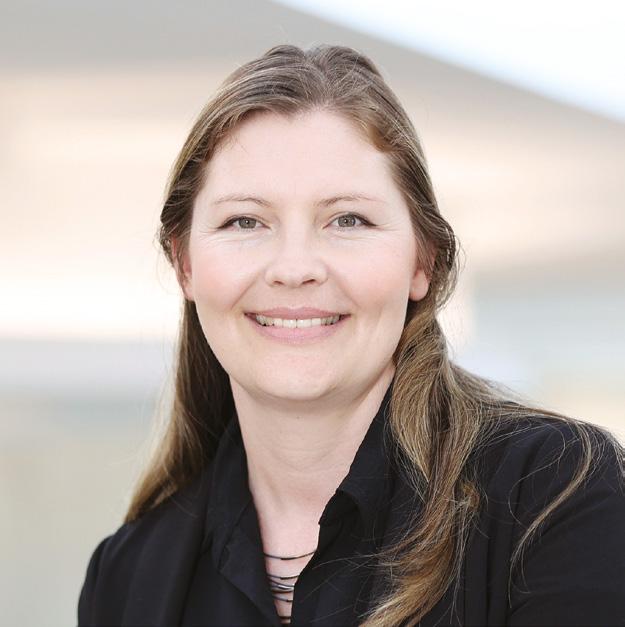
how this cycle can be stopped before one finds themselves in debt review, or worse, bankruptcy.
When looking at the respondents’ perception of wealth-building methods, the survey revealed that most respondents (22%) associate wealth with assets like property inherited from relatives/parents. While this is correct, there are various other methods available to build wealth, and it is encouraging to note that 89% of respondents think Life Cover is one of them. This outcome indicates significant improvement in the understanding of what wealth generation means and how it can be achieved.
We cannot deny that the current economic reality has been harsh on the pocket, but now is not the time for consumers to let their guard down. In fact, they should be seeking financial education and speaking to their financial advisor or insurer to determine the best way to financially navigate these difficult times.

“87% of the survey respondents are expected to create generational wealth to secure their families’ financial future”
31 March 2024 6 www.moneymarketing.co.za IMAGES Shutterstock .com
NEWS & OPINION
Change your TFSA investment cycle to March
BY MIKE TITLEY Business Development and Marketing at Laurium Capital
There are two certainties in life: death and taxes. The South African government has given you a pass on one of these, and it is not death. History shows, by proactively investing in a Tax-Free Savings Account on 1 March each year, instead of waiting for the tax year end, one could be R108 000 (21%)* better off.
On 1 March 2015, the South African government introduced a new savings vehicle that aimed to incentivise saving outside of the regular retirement savings route. The Tax-Free Savings Account (TFSA) allows investors to maximise tax relief on their investments. All proceeds from the investments in a TFSA, including interest income, capital gains and dividends, are exempt from tax. In 2015, the annual contribution limit was set at R30 000 while the lifetime contribution was limited to R500 000. This was then adjusted to R33 000 in March 2017 and then to R36 000 in March 2020, with no change to the R500 000 lifetime limit. At the current parameters, one could maximise the contribution rate for a period of just over 15 years before reaching the lifetime limit. For individuals proactive and fortunate enough to have begun investing in 2015 in a TFSA, they could have contributed R309 000 by 29 February 2024. To use an example of a family of four, this equates to R1 236 000 of after-tax contributions from 2015 to the end of February 2024 that are compounding tax free.
“For younger investors, a TFSA allows one to invest tax effectively in a liquid investment vehicle towards a future event”
When considering the various savings avenues, some serious considerations are returns, costs, tax and liquidity. A TFSA investment option ticks all these boxes and makes sense as a first port of call for individuals trying to save for their future.
An individual can access a wide variety of asset classes and investment strategies via TFSA unit trusts provided by the asset management industry.
The gains, interest and dividends generated by the investments are not subject to tax.
An individual may withdraw from the tax-free investment at any time, up to any amount.
• TFSA investments may not levy performance fees and, therefore, any outperformance by the investment is retained (untaxed), excluding the flat management fee.
There are some caveats to TFSA accounts , however. These have been put in place to try to encourage individuals to stay invested and to invest as soon as possible:
• There is no carry over of your annual allowance into the following year. By way of example, if one did not make any TFSA investment in the tax year ending 28 February 2024, they could not carry the R36 000 allowance into the 2025 tax year. You remain limited to the R36 000 per annum until reaching the lifetime limit of R500 000.
• Any withdrawals made from a TFSA cannot be replenished. If you have contributed the R309 000 to date and choose to withdraw R100 000, your overall lifetime limit will then drop from R500 000 to R400 000. Contributing more than the annual R36 000 and lifetime limit of R500 000 will result in tax penalties. TFSA is targeted at the average South African saver, trying to encourage saving beyond their bank accounts and under their mattresses.
There are several incentives to use a Tax-Free Savings Account:
• For younger investors, a TFSA allows one to invest tax- effectively in a liquid investment vehicle towards a future event. This may include buying a house or affording a wedding.
• Unlike retirement savings, TFSA is not subject to Regulation 28, allowing one to invest more aggressively in equities (above the 75% limit) or at higher offshore exposures than the 45% offshore.
Should one’s investment strategy or objective change, switches between TFSA unit trusts may be made without triggering a CGT event (introduced on 1 March 2018). There is no limit on the number of tax-free accounts one can have.
• Down the line, in retirement, drawing down on one’s TFSA account can be

used to offset the withdrawals needed from a living annuity. This will result in an overall tax saving until such time as the TFSA is depleted.
So, for those who have just topped up their TFSA accounts at the end of February 2024, why delay to the end of February 2025 for the next allocation? Switching ones investing behaviour to proactively investing on 1 March each year as opposed to by 28 February can accelerate your growth potential by a year.
Chart 1 illustrates three TFSA investment scenarios utilising the 15-year performance history of the South African FTSE JSE ALSI (TR) equity index. It compares the scenario of investing at the earliest possible date each year (1 March) versus investing at year end (28 February), and lastly, utilising a monthly debit order. Each scenario has an equal total value invested of R500 000, just at different timings.
In the above table , simply by investing early, one could have been ahead by 21% or R108 000, tax free! At Laurium, we offer all our long only funds on a TFSA basis, at a flat fee. Please see the Laurium Funds listed as follows:
• Laurium Flexible Prescient Fund
Laurium BCI Strategic Income Fund
Laurium Africa Bond USD Prescient Fund
Laurium Stable Prescient Fund
• Amplify SCI Balanced Fund (Managed by Laurium)
Nedgroup Investments SA Equity Fund (Managed by Laurium).
These can be accessed directly via our website (www.lauriumcapital.com). Good growth return prospects with no lockups, no tax, no performance fees. Invest today! The 8th wonder of the world, compounding, is on offer, tax-free, in one of our TFSA unit trusts.

NEWS & OPINION 31 March 2024 IMAGES Shutterstock .com
Start date Frequency Contribution Total Invested Value at 29 February 2024* 1 March 2009 1 March, lump sum R36 000 R500 000 R 1 260 000 28 February 2010 28 Feb, lump sum R36 000 R500 000 R 1 165 000 1 March 2009 Monthly payments R3 000 pm R500 000 R 1 152 000 *Performance for the month of February 2024 is estimated at 1.0%. -100000 100000 300000 500000 700000 900000 1100000 1300000 1500000 Mar-09 Aug-09 Jan-10 Jun-10 Nov-10 Apr-11 Sep-11 Feb-12 Jul-12 Dec-12 May-13 Oct-13 Mar-14 Aug-14 Jan-15 Jun-15 Nov-15 Apr-16 Sep-16 Feb-17 Jul-17 Dec-17 May-18 Oct-18 Mar-19 Aug-19 Jan-20 Jun-20 Nov-20 Apr-21 Sep-21 Feb-22 Jul-22 Dec-22 May-23 Oct-23 Tax Free Savings Account - Scenario Analysis Full Allocation P.A, 1 March, Early 1/12, Monthly debit Full Allocation 28 Feb, Year End CHART
1 TABLE 1
2024 Salary Guide for the Finance sector
Pnet’s Job Market Trends Report provides data-driven insights into recruitment and employment trends in the local market. Developed to give local businesses a comprehensive summary of the trends shaping the local recruitment market, the report also unpacks specific sector insights – from both an employer and candidate perspective.
In the latest report (Q4:2023), Pnet provides insights into the market-related monthly salaries that the job market is offering for specific job roles and professionals. Earning a salary is the number one reason why people look for a job, take up a job or find a new job. However, talking about salaries is still a taboo topic and most people simply speculate about what others earn.
According to Statistics South Africa, the average monthly salary in South Africa is R26 086. In the interest of job seekers, employers and recruitment specialists, Pnet has taken a deep dive into market-related salaries, providing insights into what the job market is offering for specific job roles and professionals in the Finance sector: Year-on-year increases in salary offerings were evident for Bookkeeping (7%), Credit Management (between 20% and 25%), and Internal Auditing (between 10% and 14%).
On the other hand, External Auditing
experienced a year-on-year decrease in salary offerings (between -2% and -6%). Top earners in Finance are Financial Analysts, Internal Auditors, External Auditors and Cost & Management Accountants.
How Pnet solves recruitment challenges for SMEs
Pnet is the leading online recruitment platform in South Africa, offering a range of benefits to help SMEs hire the right people:
• Time and cost efficiency: Pnet streamlines the hiring process so that SMEs can quickly and directly reach more jobseekers. Pnet’s smart-matching technology makes it easy to filter and shortlist potential candidates. This reduces the administrative tasks associated with hiring activity, resulting in significant time and cost savings for SMEs. In addition, Pnet’s Response Handling Team can free up time for SME employees to focus on their core activities by managing the entire recruitment process on their behalf, with pricing to suit SMEs of all sizes.
• Access to a larger talent pool: With a database of six million jobseekers, Pnet provides access to a diverse pool of quality candidates, including both active and passive jobseekers. SMEs can connect with candidates from various locations and backgrounds, increasing

the likelihood of finding the right fit for their roles. What’s more, job ads get extra exposure through Pnet’s extensive investment in marketing and promotion of job listings on the platform, and get further reach from the 100 million Job Alerts that Pnet sends directly to jobseekers’ inboxes every month.
• Brand visibility: Even smaller companies can gain visibility and credibility through Pnet, thanks to its Company Hub solution, which enables SMEs to enhance their
Five essential discussions every FA should have with clients in 2024
BY HENRI LE GRANGE Old Mutual Personal Finance Certified Financial Planner®
In the dynamic landscape of 2024, financial advisers in South Africa are redefining their roles – they are not only keeping an eye on wealth but also helping customers navigate their journey to sustainable financial wellness. This year marks a transformative chapter for financial advice, where the blend of nuanced communication and forwardthinking strategy will lay the groundwork for lasting financial wellbeing. It’s a time of great potential and pivotal change for financial advisers.
As we navigate through shifting market trends, technological changes, and the introduction of the innovative Two-Pot Retirement System currently scheduled for 1 September 2024, it becomes increasingly important for financial advisers to engage in strategic conversations with their customers.
The Two-Pot Retirement System offers a balanced and structured practice for retirement planning. By categorising savings into two separate pots, this system provides customers short-term relief during financial emergencies. This system promotes present-day financial safety and ensures customers think more carefully about their retirement years.
The following five essential conversations allow advisers to guide their customers towards making informed financial decisions, ultimately leading them into a better financial position.
Conversation 1. Goalsetting
Effective goalsetting involves aligning customers’ short-term and long-term financial aspirations with realistic investment and risk-management strategies. Advisers should facilitate this process by helping customers define clear, measurable goals and designing a tailored investment approach to achieve these objectives. This method provides a roadmap for financial success that is both ambitious and attainable. Tailoring each individual’s unique financial scenario is essential. This personalisation involves considering factors like risk tolerance, timing, and specific financial goals.
Conversation 2. Behavioural finance and its implications
Behavioural finance shows that our biases and emotions greatly influence investment choices. Advisers must talk to their customers about common biases, like being too confident or following the crowd. This helps people notice and reduce these tendencies. By doing this, advisers can encourage a more logical and less emotion-driven way of making investment decisions.
Conversation 3. Balancing immediate and long-term financial needs
A critical skill is navigating the tightrope between immediate financial needs and long-term aspirations. Advisers play a crucial role in helping customers understand the importance of maintaining an emergency fund while simultaneously investing in long-term growth opportunities. This balanced strategy ensures financial resilience in the face of unforeseen
employer brand and attract top talent without going to the expense of investing in their own website.
The role of data in recruitment has emerged as a crucial factor in staying competitive and relevant. By understanding the challenges unique to the Finance sector, businesses can leverage data-driven recruitment to ensure a steady pipeline of qualified candidates and reinforce their position in a competitive market.
circumstances and steady progress towards future financial goals. Long-term financial stability is a cornerstone of an effective financial plan. Advisers should encourage customers to contribute to their funds and maintain a diversified portfolio consistently. This disciplined approach and the system’s structure help build a robust financial foundation.
Conversation 4. The evolving role of financial advisers in customer relationships
The role of financial advisers is becoming more dynamic. Advisers should focus more on understanding their customers’ evolving life stages, financial situations and emotional needs. By aligning financial strategies with these changing dynamics, advisers can provide more personalised and effective financial guidance, leading to stronger customer relationships and better economic outcomes. A financial plan’s strength lies in its ability to be diversified. Advisers should highlight how the plan allows new options based on changing life circumstances or financial goals. Additionally, it should focus on diversifying assets across different classes and timelines.
Conversation 5. The rise of digital financial tools
The rise of digital financial tools has revolutionised how customers interact with their investments. Advisers should emphasise the convenience, accessibility, and real-time analytics these tools provide, which empower customers to make more informed decisions. Furthermore, integrating these digital solutions can create additional options tailored to customers’ needs.
31 March 2024 NEWS & OPINION 8 www.moneymarketing.co.za IMAGES Shutterstock .com

The Budget for 2024/25 was a sobering reflection of the economic challenges facing South Africa. It aimed to balance fiscal consolidation, debt reduction, revenue mobilisation and social spending, while also addressing some of the long-standing structural issues in the financial sector.
Budget overview
There’s no broad relief for taxpayers this year, as the government seeks to raise an additional R15bn in tax revenue, mostly through direct taxes. The personal income tax brackets were not adjusted for inflation, resulting in fiscal drag and higher effective tax rates for most taxpayers. There were also no changes to the fuel levy, dividends withholding tax, estate duty, donations tax, medical tax credits, foreign employment exemption or the tax-free savings annual contribution limit. Furthermore, the solar incentive was not extended.
Retirement reform
The budget confirmed the new two-pot system for retirement fund withdrawals, starting from 1 September 2024. This system lets you access part of your retirement fund savings before you retire, within certain limits and tax consequences. The system affects funds saved from 1 September 2024 onwards, and only the ‘savings component’ of the fund. The withdrawals that are allowed are taxed at marginal tax rates. Seed capital of R30 000 (or 10% of the fund value, whichever is less) will be provided for the savings component. This will be transferred from the existing fund value on 1 September 2024. The remaining part of the fund, called the retirement component, is kept until retirement. Government is forecasting that it will collect R5bn in taxes from withdrawals made from the savings component in 2024/25 tax year.
Budget 2024: Opportunities for financial planning and advice
BY FRANCOIS DU TOIT, CFP® PROpulsion
Reform of the Gold and Foreign Exchange Contingency Reserve Account (GFECRA)
The budget announced a plan to use some of the money the Reserve Bank has made from foreign exchange transactions. This money is kept in a special account called the GFECRA. The last time the government and the Reserve Bank shared this money was almost 20 years ago. Now they have agreed to split R150bn over three years, starting from 2024/25. This money will help the government borrow less and pay less interest on its debt.
Crypto-assets policy
The government plans to regulate the crypto-assets market. A position paper on crypto assets was published in June 2021, proposing a regulatory framework and timelines. In November 2023, the FSCA declared crypto assets to be a financial product, requiring FSPs to be licensed by them in this regard. It also said that stablecoins, crypto assets linked to other currencies or assets, will be regulated by 2024. The IFWG will suggest policies based on international standards. The government may also require reporting of crypto-asset transactions above R49 999.
Tokenisation
The IFWG is studying the implications of tokenisation, which involves the conversion of assets, such as securities and payments, into digital tokens on a blockchain and plans to publish two papers on the topic by December 2024. The papers will provide guidance on the rules and policies.
Digital payments
The National Treasury and the Reserve Bank have partnered with Switzerland and FinMark Trust to launch an inclusive
payments digitalisation programme to run from 2024 to 2027. It’ll involve four digital payments pilot projects with different financial service providers.
Unclaimed assets
The FSCA is working on a framework to deal with unclaimed financial assets, which are assets that belong to owners who cannot be found or contacted. The framework will be based on the feedback from a discussion paper that the FSCA published in 2022, and will include guidelines for identifying, monitoring, managing and reporting unclaimed assets, as well as finding the rightful owners.
“The fiscal drag and the higher tax burden on taxpayers create a need for tax-efficient planning, especially for highincome earners”
Opportunities
Despite the challenges and constraints, there are always opportunities for financial planning and advice. Some areas to explore with your clients are:
Tax-efficient planning: The fiscal drag and the higher tax burden on taxpayers create a need for tax-efficient planning, especially for high-income earners. Help your clients to optimise their tax deductions, such as retirement fund contributions, medical expenses and donations, and to utilise their tax exemptions, such as interest income, capital gains and foreign dividends. Also advise clients on the tax implications of different investment vehicles, such as unit
trusts, exchange-traded funds, endowments and trusts, and help them to choose the most suitable ones.
Analyse IT34 assessments for opportunities: Analyse your clients’ IT34 assessments for opportunities to improve their tax position, such as claiming additional deductions, correcting errors or objecting to incorrect assessments. The IT34 assessments can also identify sources of income, expenses and assets, enabling you to provide holistic financial advice based on their financial situation.
More flexibility for retirement planning: The new two-pot system for retirement fund withdrawals offers more flexibility for retirement planning. You can help clients understand the benefits and risks of the new system. You can also assist clients with the tax planning and the investment strategy for their retirement fund savings.
Review trusts and structures: The antiavoidance rules for low-interest or interestfree loans to trusts have been tweaked, effective 1 January 2024. The changes affect the calculation of the deemed interest and the donations tax on such loans, especially when they are denominated in foreign currency. Review your clients’ trusts and structures, and advise them on the impact of the changes on their tax liability and estate planning. Assist clients to restructure their trusts and structures.
Be careful not to make saving or not paying tax the primary goal of any planning. Rather focus on the required outcomes the client is looking for and then plan as tax efficiently as possible.
About Francois du Toit: Du Toit founded PROpulsion, a thriving community for financial planners and advisers focused on helping them belong, grow and thrive. He hosts the PROpulsion LIVE podcast (every Friday at 8am live on YouTube), sharing his two and a half decades of experience and engaging with guests to inspire and inform. Visit www.propulsion.co.za for more information.

NEWS & OPINION 31 March 2024

The 2024 Budget and what it means for our economy
BY ANGELIQUE STRONKHORST Consultant, AJM
On 21 February 2024, Finance
Minister Enoch Godongwana took the stage to give the last budget of the sixth democratic administration.
 BOBBY WESSELS Manager: Corporate and International Tax, AJM
BOBBY WESSELS Manager: Corporate and International Tax, AJM

With a need to control government debt, curb expenditure, and enhance measures to grow our economy, the Minister tabled the 2024 Budget under what can only be described as extremely challenging economic conditions. The Minister himself recognises that our so-called ‘economic pie’ is not growing fast enough to meet our development needs and generate sufficient income to allocate towards our key focus areas.
In the weeks leading up to his address, the media was buzzing with speculation about tax increases to (among others) fund the budget deficit and curb debt. For every R1 of government revenue, 20c is spent on servicing debt, whereas a further 60c is allocated to the social wage bill. The simple maths shows that only 20c of the R1 remains available for all other expenditures. However, in stark contrast to the
speculation, there were no material tax changes to either income tax, corporate tax, or indirect tax. Unfortunately, for the average consumer this is not necessarily good news. From a personal income tax perspective, there were no adjustments to the tax brackets, rebates, or medical tax credits. There were also no adjustments to the limits on tax-free savings accounts and contributions to pension funds.
Freezing the tax thresholds and the lack of adjustments to the rebates will likely lead to fiscal drag as more taxpayers are ‘dragged’ into higher tax brackets, especially, for example, where those taxpayers receive inflationary-adjusted salary increases. Accordingly, despite not increasing tax rates, these measures will lead to increased revenue collection, amounting to an additional R15bn in revenue. Although these measures place pressure on the average consumer, with roughly 40% of revenue collected being raised from personal income tax, it is no surprise that the government has turned
to these measures to raise additional revenue. Taxpayers were provided with some solace as there were no changes to the general fuel levy, resulting in tax relief of roughly R4bn.
The only increases in tax rates came about on a sin tax level. There will be an increase in excise duty for alcohol products, ranging from 6.7 to 7.2 per cent, which surpasses inflation rates. Excise duties for tobacco products are proposed to increase between 4.7 and 8.2 percent, depending on the tobacco product. In addition, government is proposing an increase in the excise duty on electronic nicotine and non-nicotine delivery systems, commonly referred to as vapes, which is estimated to amount to R3.04 per millilitre after the said adjustments.
On the expenditure side (aside from usual government expenditure) R1.4bn has been allocated to the national health insurance over the next three years for preparatory work. Besides the allocation, the Budget did not devolve any further
“Freezing the tax thresholds and the lack of adjustments to the rebates will likely lead to fiscal drag as more taxpayers are ‘dragged’ into higher tax brackets”
information about the government’s plans for national health insurance. Being an election year, the government has allocated an additional R2.3bn to the Independent Electoral Commission.
Unfortunately, the budget shortfall is estimated to worsen from 4.0 to 4.9 per cent of GDP, which has forced the government to turn inward to manage this shortfall by withdrawing (a once-off) 30% of the R500bn strategic Gold and Foreign Exchange Contingency Reserve held by the Reserve Bank.
While the budget may not appear to have made significant adjustments at first glance, it is evident that the 2024 Budget, consistent with the budgets presented since 1994, aims to advance our economy while tackling the persistent inequalities and hardships that afflict our society. The key focus for the government would be centered around curbing unnecessary government expenditure as furtherance of this cause.
It is evident that the government’s goal throughout the last three decades has been to revive fairness in both social and economic realms within our nation, aiming to tackle the entrenched inequality stemming from systemic discrimination and dispossession.
In summary, echoing the sentiments of Nelson Mandela, our esteemed first democratic President, and underscored by Finance Minister Enoch Godongwana, it’s imperative to recognise that achieving socioeconomic justice and shared prosperity is an ongoing journey rather than a final destination.
31 March 2024 NEWS & OPINION 10 www.moneymarketing.co.za IMAGES Shutterstock .com
The fundamental duty of the fiduciary practitioner
BY DR EBEN NEL
National Chairperson, The Fiduciary Institute of Southern Africa
Not all advisory relationships require the same level of trust. Although many service providers, including financial advisors, are expected by their clients to fulfil their duties with honesty, diligence and fairness, the benchmark set for the fiduciary practitioner is higher than just that. The reason being that the fiduciary practitioner’s position establishes a relationship with a third party who is often in a vulnerable position. The fiduciary concept is derived from the Latin term fides, referring to trust, loyalty, and good faith. The fiduciary practitioner, particularly in the role of trustee or executor, is expected to conform to the highest level of integrity. The practitioner has a fiduciary
duty towards the third party who must be able to trust him or her.
The trustee is directed by legislation to perform his or her duties and exercise their powers with the care, diligence and skill that can reasonably be expected of a person who manages the affairs of another. A trustee is prohibited from being exempted or indemnified against liability for breach of trust where he or she fails to show the required degree of care, diligence and skill. Whereby a person manages the affairs of another to whom he or she owns a fiduciary duty, the law requires such a person to act with more care and diligence than when dealing with his or her own matters. This concept,
“To act with integrity includes honesty, fairness, objectivity and independence of thought and behaviour”
which is contradictory to the selfishness of humans in general, has been referred to as an ‘other-regarding duty’. It is not the trustee’s duty to fulfil the expectations or to grant the wishes of a particular person, but to objectively act in the best interest of all the parties that he or she has a fiduciary duty towards.
A well-known law professor liked to equate the duty to act with the necessary care and diligence when dealing with another’s affairs as that of a person wearing a belt and braces at the same time. It is generally accepted that besides the duty to act with the necessary care, diligence and skill, the trustee’s fiduciary duty also includes the duties of impartiality, accountability and independence. An executor of a deceased estate is potentially placed in several complex relationships with parties who may have an interest in the deceased estate. These may include spouses,
The imperative of fiduciary duty in South African financial services
BY JAMES GEORGE Compliance Manager, Compli-Serve SA
In the realm of South African financial services, the concept of fiduciary duty stands as a cornerstone, dictating the ethical and legal obligations that financial service providers (FSPs) owe to their clients. This duty, enshrined in various legislative frameworks, including the Financial Advisory and Intermediary Services Act (FAIS Act), the Companies Act, and grounded in common law principles, is pivotal in ensuring the integrity, trust and professionalism of the financial industry.
At its core, fiduciary duty necessitates that FSPs, encompassing financial advisors and planners, act in the best interests of their clients. This extends beyond mere advice and into the realm of market conduct. It requires prioritising client needs, objectives and circumstances above all else. The essence of this duty is not only to provide appropriate advice but also to offer services that align closely with individual client profiles.
Transparency and disclosure form another critical aspect of fiduciary duty. FSPs are mandated to clearly reveal any potential conflicts of interest and to furnish clients with all pertinent information concerning financial products and services. This includes a comprehensive breakdown of risks, costs and benefits, ensuring that clients make informed decisions.
Moreover, the fiduciary duty encompasses due diligence and care in professional activities. FSPs are expected
to conduct thorough analyses, base their advice on accurate and complete information, and exercise a high degree of professionalism. Alongside this, maintaining the confidentiality of client information is non-negotiable, upholding the sanctity of the client-provider relationship.
The oversight of these duties falls largely to the Financial Sector Conduct Authority (FSCA) in South Africa, tasked with ensuring that FSPs adhere to legal standards, embodying principles of fairness, transparency and accountability. The FSCA has the power to impose disciplinary measures on FSPs who fail in their fiduciary duties, ensuring that the industry maintains its integrity.
The impact of fiduciary duty on the financial services sector cannot be overstated. It is instrumental in fostering
“FSPs are mandated to clearly reveal any potential conflicts of interest and to furnish clients with all pertinent information concerning financial products and services”

legatees, heirs, business partners, and creditors of the deceased. Many, but not necessarily all, of these relationships may be of a fiduciary character. Even if not, everyone will have the right to expect from the executor to at least act lawfully and in good faith.
A fiduciary practitioner who is a member of the Fiduciary Institute of Southern Africa (FISA ) is bound by the association’s code of ethics, focused on two broad principles, namely integrity and diligence. To act with integrity includes honesty, fairness, objectivity and independence of thought and behaviour. The fiduciary is also expected to take all reasonable steps to avoid conflicts of interest. To pass the test of diligence, a high level of knowledge and competence is required. The fiduciary must further treat relevant information with confidentiality and do everything necessary to ensure their personal financial stability.

trust between clients and their financial service providers. This trust is crucial, especially in an industry that deals with the sensitive matter of personal and corporate finance.
However, the landscape is not without its challenges. There have been instances where the fiduciary duty has been seen wanting, leading to significant consequences. Real-world examples in South Africa, such as the collapse of African Bank in 2014 and, more recently, the controversy surrounding Steinhoff International, highlight the repercussions of neglecting fiduciary responsibilities. In these cases, poor governance and a lack of adherence to fiduciary duties not only led to financial losses but also eroded public trust in the financial sector.
For FSPs who breach their fiduciary obligations, the consequences are severe. They face not just legal and regulatory repercussions, including fines and potential revocation of licenses, but also the loss of client trust, which can be devastating for any financial institution. Clients affected by such breaches have the right to seek legal redress, which often includes compensation for damages.
As the financial landscape evolves, the continuous upholding of fair and ethical treatment remains essential for protecting consumers and maintaining confidence in the financial system.
CONSUMER RIGHTS 31 March 2024 www.moneymarketing.co.za 11
Listed property builds on 2023’s market-leading performance
BY SIOBHAN CASSIDY MoneyMarketing
Investors can no longer afford to ignore SA Listed Property, the top-performing asset class on the JSE in 2023, but there is still resistance to the sector with which South African investors have long had a love-hate relationship. The FTSE/JSE All Property Index (ALPI) delivered a total return of 10.70% in 2023, outperforming bonds (FTSE/JSE All Bond Index) at 9.70%, equities (FTSE/JSE All Share Index or ALSI) at 9.25%, and cash (Alexander Forbes Short Term Fixed Interest Index or STEFI Index) at 8.06%. Shane Packman, associate investment analyst at Morningstar South Africa, notes that the sector has continued to perform well into 2024. He pointed to data for the three months to the end of January, during which time JSE-listed property was up 24.8%, compared to the ALSI’s comparatively modest increase of 7.5%.
However, Mvula Seroto, SA Portfolio Manager at Catalyst Fund Managers, says, “A lot of our asset allocators are still hesitant. They are sitting on the fence. They don’t want to be the first movers.” Investing in property has long been considered a cornerstone of wealth creation, but to own property directly is often complicated and expensive. Hence the allure of investing in listed property is strong. For most investors, it’s the simplest and most transparent route to gaining exposure to commercial real estate in South Africa.
While the asset class has recovered somewhat from pandemic lows, investors remain uncertain as to whether the sector can weather the headwinds that continue to buffer SA. The million-dollar question is: Can the sector provide opportunity during these uncertain times?
Listed property explained
Listed property comprises shares or holdings in companies that own, develop and/or manage real estate and trade on an exchange. Investing in the sector gives access to ownership of real estate but, unlike traditional property ownership, investing in listed properties provides investors with daily liquidity. “When investing in listed property, you have the ability to consider the current and changing market conditions and valuations,” says Packman. “In addition, you gain exposure to the underlying performance of the listed company, as well as the underlying performance of that portfolio of properties.”
The flipside of the liquidity, adds Packman, is mark-tomarket risk, since “it is on an exchange, it is traded daily”. Naeem Tilly, Portfolio Manager & Head of Research at Sesfikile Capital, explains: “Compared to direct property, listed property offers investors a liquidity benefit, professional management and diversification. But, on the other hand, you have a tradable market that values your asset differently from its book value. It could trade at a premium, but at the current time it’s trading below the fair value.”
Packman adds, “When you are buying and selling, you could experience a loss in the underlying, and there’s also a risk that it underperforms. If there’s a sentiment shock towards SA equities, for example, values can take a knock.” However, in addition to the expectation that the share price will increase over time, investors receive income in the form of regular shareholder distributions of rental income. Rental income is usually reasonably reliable since it is generally based on contracts, the value of which tend to rise over time and in step with inflation.
This means that listed property has characteristics of both equities and of bonds, making it a good diversifier of investment returns.
Regulatory controls
Another benefit of investing in listed property is regulatory oversight. Many listed property companies have adopted the framework that governs Real Estate Investment Trusts (REITs). A REIT is a listed property company that is governed by strict regulations in terms of structure and operations. South Africa’s regulation of REITs is very similar to that in other countries, which helps to underpin investor confidence. REITs are required to pay out at least 75% of their earnings to investors as dividends, which makes earnings reliable and predictable.

Catalyst Fund Managers’ Seroto says, “The main reason why the REIT structure is so compelling is that you access the opportunity to invest in an asset that you would never be able to afford as an individual. The REIT structure allows you relatively easy and cheap access to some of the best assets in the country, and in the world.”
REITs are not the only game in town. Other companies in the sector are structured as Property Unit Trusts and must adhere to the regulations governing the unit trust industry.
What’s the downside?
Detractors will tell you that, benefits aside, listed property is volatile and too risky. Says Packman, “A large portion of the assets of REITs are very exposed to the local economy, meaning they will be impacted by any headwinds the SA economy faces.” There is also quite a lot of concentration in the listed property space. “If you look at the top three holdings, it makes up almost 40%. So, if we do see some movement within any of these underlyings, it would shift the market quite a bit. That’s different from the all-share, which has over 100 listed securities in it.”
The offshore influence
As at the end of January 2024, approximately 48% of the revenue of the FTSE/JSE SA Listed Property Index was generated outside South Africa, meaning the sector’s dividend yield and return are derived from both local and offshore revenue streams.
The largest constituent in the index, Nepi Rockcastle, which accounts for more than 25% of the index, generates 100% of its revenue from central and eastern Europe. While global property has faced its challenges in recent years, Nepi Rockcastle has reported strong distributable earnings, reflecting resilience in the region. The shift in revenue exposure to global markets provides access to
LISTED PROPERTY 12 www.moneymarketing.co.za
a diversified revenue stream, reducing reliance solely on the local economy. Sesfikile Capital’s Tilly says, “If, say, you decide to build your wealth using buy-to-rent properties, depending on your wealth, you could build a small portfolio of properties. If you buy into just one of the bigger South African listed companies, you’ve got access to several hundred properties in South Africa, assets potentially in Eastern Europe or the UK.”
Highest performers
The sector also benefits from internal diversification The largest segment of the asset class is retail, which makes up more than 60% of the index by market capitalisation. Overall, national retail vacancies have shown resilience coming in at 5.1% at the end of the third quarter of 2023, which is below the peak of 7% recorded in 2021. Retailers’ cost of occupancy, at its lowest level in 10 years, further improved in the third quarter of 2023 as sales growth continued to outpace the growth in gross rental.
The second-largest segment is industrial, at just under 20% of the index. It has continued to be the outperformer among the three major sectors in South Africa, with the lowest vacancy rates and the highest base rental growth. Of the various sub-sectors within industrial, manufacturing faces headwinds, but logistics and storage are seeing good demand.
The third big sub-sector, office, makes up less than 15% of the index. Work-from-home pressure and weak business confidence continue to put pressure on office vacancy levels, with national vacancies of 15.2% at the end December 2023, down from a high of 16.7% in 2022.
The last few years in perspective
Before 2017, it was common for multi-asset funds to have healthy allocations to the SA listed opportunity set, mostly due to the appeal of property companies offering relatively stable dividends. The SA property market demonstrated strong performance between 2013 and 2017, attracting significant investment flows into the sector. These were bullish times in Listed Property and the REIT space, with some companies paying out between 90% and 100% of their earnings. The Alexander Forbes Large Manager Watch Survey indicates that locally listed property allocations in balanced and multi-asset funds fell below 3% on average in 2023, contrasting with a peak of over 6% in 2017.
Sentiment began to weaken in early 2018 on concerns around the overuse of debt and possible financial engineering between these companies. In the context of corporate governance concerns and a deteriorating local economy, valuations started to look quite expensive, and questions were raised about the sustainability of earnings.
And then Covid arrived. The FTSE/JSE SA Listed Property Index lost 62.6% of its value between 1 January 2018 and 31 October 2020, with most of the drawdown occurring when the pandemic hit.
In some important ways the listed property sector emerged from the pandemic in better shape than it was before. Yes, shopping centres were deserted, and offices emptied as staff worked from home. Tenants were unable to pay rent and contracts were not renewed. But many in the sector used the opportunity to hit the pause button, hold back on their payouts, and reduce their holdings in non-core assets.
The result was that many cleaned up their balance sheets and emerged from Covid looking better than they had when they entered. Importantly, companies were no longer paying out 90% to 100% of their earnings
“Investors have generally been underweight in the sector for some time, but we believe average allocations will increase this year as the recovery in fundamentals continues”
Trends going foward
Towards the end of last year, we saw a bit of a rerating of listed REITs, says Packman, which had been trading at a large discount to NAV basis. “When expectations shifted from ‘interest rates being higher for longer’ to ‘potentially being cut’ (both globally and in South Africa), the asset class did quite well. This shift really bolstered sentiment towards REITs and has subsequently assisted the performance that was seen over the past three months.”


Tilly agrees. He says property fundamentals showed signs of recovery throughout 2023, but a material rebound in share prices was seen when rate expectations started to turn in the fourth quarter. He expects the growth will “really start to come in the next year to 18 months”. He adds, “While there has certainly been increased interest in the sector, some investors remain hesitant, as the recent run may have closed the upside potential the sector was offering.
“Investors have generally been underweight in the sector for some time, but we believe average allocations will increase this year as the recovery in fundamentals continues and rates start to decline, improving confidence in the outlook through increased visibility in earnings growth. We continue to see 10-15% total return potential for the sector.”
Seroto agrees that the mood is changing. “I see all the negative headlines, about too much risk in property. If I didn’t know much about it, I might also think it was too risky. And, yes, there are pockets, like office, which are still a threat. But that is 15% of the listed property universe in SA (globally, it’s even lower). They don’t talk about industrial, a net beneficiary of Covid, and the retail recovery.”
He adds that there was “a theme last year”, where everyone was underweight property, and the hedge funds were shorting property. “Now we look back and in 2023 property was the best-performing asset class in South Africa, and that momentum has continued into 2024.”
31 March 2024 www.moneymarketing.co.za 13 IMAGES Shutterstock .com

Retail real estate investment trust shows growth
BY LAURENCE RAPP CEO of Vukile Property Fund
Vukile’s South African and Spanish retail property portfolios delivered impressive increases in performance in November and December 2023, signalling a successful Black Friday and holiday trading period.
Vukile is a consumer-focused specialist retail real estate investment trust (REIT) that holds a defensive portfolio of retail property assets valued at around R40bn, 40% of which is in South Africa and 60% in Spain. The Spanish assets are held in the Madrid-listed subsidiary Castellana Properties Socimi (“Castellana”), in which Vukile has a 99.5% holding.
The South Africa position
All key operating metrics for November and December 2023 were positive and in line with expectations, with a particularly strong festive trading performance. During December 2023, shopper footfall in the portfolio increased by 2.0%, demonstrating strong and steady support. A quarter of shoppers who visited Vukile’s malls on Black Friday also returned during December. Township and rural malls enjoyed higher rates of repeat visitors, emphasising the central role they play in their communities.
The portfolio’s sales grew by 2.6% for the 2023 calendar year, with festive trading figures being notably higher than those in 2022.
The portfolio delivered strong December 2023 figures, with trading
densities growing by 7.6% compared to December 2022. Township shopping centres led this performance with 13.2% growth, followed by rural shopping centres (+7.2%) and the urban shopping centres (+4.5%).
During the combined November and December period, the portfolio’s trading density increased by 4.3% compared to the same months in 2022. The township portfolio enjoyed an increase of 9.7%, the rural assets rose by 3.3% and the urban properties showed growth of 1.3%.
These numbers are more impressive when considered against the backdrop of figures reported by Statistics South Africa, indicating a decline in retail sales for November.
The Vukile portfolio experienced a seasonal uptick in the fashion trade. Women’s wear sales surged 14.5% in December, marking an overall 10.4% increase for the final two months of the year. Meanwhile, men’s wear saw a healthy 8.1% growth in sales during November and December 2023. Sales in the grocery/supermarket category rose by 2.4%, while the fast foods segment saw a 5.4% rise, indicating steady demand for essentials.
The Spanish position Spain demonstrated excellent performance, leading Europe with a 5.3% growth in footfall in the last quarter of 2023, per the Shopper Track report. The report indicates a strong positive trend
in the Spanish retail market, especially the shopping centre segment. For the 2023 festive season, Spain ranked top with a 5.7% increase in visits. Castellana outperformed this benchmark, growing its portfolio footfall by 6.1%.
Castellana closed the 2023 calendar year with a new record footfall of more than 44.8 million visits for the 12 months, up 6.4% from 2022. El Faro and Bahía Sur shopping centres attracted over 8 million visits in the 2023 calendar year –a new record for both. Similarly, Puerta Europa achieved its highest annual visitor numbers since opening, with almost 5 million visits or a 6.2% increase from 2022. Los Arcos and Habaneras also exceeded 2022 levels by an impressive 9.7% and 11.1%, respectively. Vallsur Shopping Centre broke its footfall record by 4.1% in 2023, with the opening of La Chismería last December – its new leisure and dining zone – exceeding retailers’ expectations.
In terms of sales, 2023 numbers improved by 7.9% over 2022, even though 2022 was one of the strongest years for Castellana’s tenants to date. The shopping centre portfolio demonstrated sales growth of 9.6% in 2023 versus 2022, outperforming retail parks at 3.7%.
Black Friday and festive season trading was extremely positive, with increases in sales of 7.0% in November and 6.1% in December – representing real growth in the portfolio.

All retail categories exceeded 2022 performance. The three categories achieving the highest increases in sales were media and technology (19.5%), health and beauty (14.2%) and food and beverage (12.3%). The leisure category, which demonstrated sales growth of 11.4% in 2023 vs 2022, finally surpassed 2019 levels by 3.7% after several tough trading years.
Outlook going forward
Based on a continuously strong trading performance and having completed nine months of its current financial year, Vukile is pleased to report that it expects to outperform the upper end of its upgraded guidance for both FFO per share (4-6% growth) and dividend per share (8-10% growth) for the year ending 31 March 2024.
The forecast above assumes no material adverse change in trading conditions, contractual escalations and market-related renewals. The forecast also assumes no material further change in interest rates and exchange rates. The forecast has not been reviewed or audited by Vukile’s external auditors.
Vukile continues to focus on meeting the needs of its customers and ensuring its malls remain sustainably and efficiently operated, to continue delivering sustained value for all its stakeholders.
31 March 2024 LISTED PROPERTY 14 www.moneymarketing.co.za IMAGES S upplied
2024 outlook for the listed property sector
BY LILIANE BARNARD Metope Investment Managers CEO & Portfolio Manager
2023 can be viewed as two distinct periods. The first 10 months of the year were marked by the continued steep rate hiking cycle around the world, including SA. Economic indicators, including employment and retail sales, remained surprisingly strong in the face of rising rates, leading the world’s central banks to adopt a hawkish stance. Markets discounted these higher rates, leading to weak performance in both equity and bond markets. Up until the last week in October, the local listed property sector had lost 10% on a total return basis.
Since late October, markets turned positive after a pivot in the tone of the US Fed on the back of decelerating inflation and slowing (but still positive) job growth. As a result, rates have been kept on hold since July 2023 in the US and since May in SA, where inflation has been within the SARB’s target band of 3-6% since June 2023. Global bond yields fell sharply on the prospect of rates having reached their peak with markets beginning to price in rate cuts in 2024. The listed property sector (the ALPI index) rallied by 23% in the last two months of the year to end the year with a total return of 10.7%. This was made up of an income return of 8% and capital gains of just 2.7% for the year. Listed property was the top-performing asset class of 2023, eking out a marginal gain over equities (+9.3%), bonds (+9.7%) and cash (8.1%). Among the top performers in the sector were UK and European retail landlords Shaftesbury Capital Plc, Hammerson and Nepi-Rockcastle.
2024 listed property macro outlook
In the coming year, we anticipate a continued, yet gradual improvement in the SA property market. The key issues expected to drive markets (both globally and in SA) include any changes in the growth, inflation and interest rate expectations, a potential escalation of global conflicts, which are affecting global supply chains and elevating inflation, and other risks, and the pace of recovery in the Chinese economy. Domestically, improvements in structural issues and a positive outcome of the election
would improve economic activity and confidence.
Global growth is expected to slow from levels achieved in 2023 because of the sharp increases in interest rates in the last 18 months. The World Bank projects that global economic growth will slow to 2.4% this year from an estimated 2.6% in 2023. SA’s growth remains further constrained and is estimated at 1% for 2024.
On the positive side, we expect a continued easing of inflationary pressures after reaching a peak in mid-2023. This is expected to be accompanied by a reduction in both global and SA interest rates, although levels are projected to remain somewhat elevated. In terms of 10year government bonds, yields have fallen c150bps from their highs in the first half of 2023; however, they are still trading at yields of c.100bps higher than 2019 levels. This triggers revaluation processes in real estate globally, and to a lesser extent in SA, as elevated interest rates have led investors to command higher risk premiums for real estate.
Additionally, elevated interest rates will influence borrowing costs and credit availability. Global property markets could face greater volumes of forced selling, with banks increasingly reluctant to refinance troubled or lower-quality assets. Elevated interest rates on new debt, or when hedges expire, render debt unfavourable in relation to unlevered yields, and increasing cap rates have caused covenants to have to be renegotiated where the lender has the appetite. This will be more prevalent globally than compared to SA, due to the higher relative interest rates in relation to prior decades of very low rates. Given that SA REITs have meaningful investments in offshore assets, investors need to understand the underlying asset fundamentals and credit markets to which our sector is exposed.
Structural issues impacting the economy are expected to ease, fostering a more robust foundation for the property market. SA property companies have been proactive through investment in infrastructure and security, which eases larger structural issues on their

“In the coming year, we anticipate a continued, yet gradual improvement in the SA property market”

business and tenants’ businesses. As underlying tenants fare better, demand for properties is expected to increase, especially in properties that are resilient (for example those that have backup power supply). SA still has impactful structural issues, but any positive reforms should translate to increased demand and, therefore, rentals.
Risks to the 2024 outlook
While the outlook is positive, potential risks can’t be overlooked, particularly the 2024 elections. SA is entering unchartered territory, with a coalition government increasingly likely given weakening ANC support. Local and global investors remain wary. However, heightened social unrest and conflict and policy uncertainty are no longer solely associated with developing economies like SA, and have gripped many European economies, which has increased risk premiums in their capital markets.
There are still many local challenges to deal with before SA can reach its full potential. The turnaround of Eskom and Transnet and failing infrastructure will take many years. Global geopolitical events further threaten price stability and economic growth, which is negative for developing nations. Furthermore, lacklustre growth in China, with its own property market woes, are concerning for SA.
South Africans should stay well informed as to the changes in the evolving outcome of AGOA, the conflict between Palestine and Israel, and the effect the war between Ukraine and Russia has on trade and risk appetite for investors. Staying abreast of these events is an invaluable exercise to manage risk.
2024 positive market trends
Despite the global and local outlook, there are still positive trends:
• The recalibration of rental levels after large reversions over the last three years
A consistent uptick in occupancy rates driven by a recovery in demand and a limited new supply coming on stream
• Fixed escalations which have bottomed out, and debt costs which are likely to peak in the next reporting period and are expected to lower from current levels.
In addition, with the reduced forecasting risk and gearing levels that have consolidated at levels close to pre-pandemic levels, listed property companies will feel more confident to increase payout ratios, and we have already started seeing this. These factors contribute to a more favourable environment for property investors.
A dynamic and informed approach will be crucial in navigating the evolving landscape of the SA property market in the coming year. The current market could be an opportune time for investors to take advantage of the dislocation by acquiring high-quality REITs at valuations not seen in recent times.
LISTED PROPERTY 31 March 2024 www.moneymarketing.co.za 15 IMAGES Shutterstock .com
Offshoreinvesting

WHAT’S INSIDE ...
Focus on alternative investments
Westbrooke Alternative Asset Management gives advice on accessing these investments, and it’s easier than you think.
Pg 1 7
Retirement plans and pensions
There is no one-size-fits-all situation when investing offshore, particularly when it comes to pension and retirement plans. Here, Sovereign Group makes some observations.
Pg 18
Look beyond the “Magnificent Seven”
The dominance of a small group of stocks can mean that other opportunities are being overlooked.
Pg 20
SUPPLEMENT
IMAGES Pexels.com
 BY SANDY WELCH Acting Editor, MoneyMarketing
BY SANDY WELCH Acting Editor, MoneyMarketing
Westbrooke Alternative Asset Management is on a mission – to provide access to the global world of alternative investment funds to South African clients. These investors may not all live in South Africa any longer, but they are connected to the country in some way. “We’re focused on what we call South African connected capital,” says Dino Zuccollo, Head of Product Development and Distribution.
Westbrooke has a 20-year track record, having been started in 2004. “When it was first founded, the aim of Westbrooke was to work in private equity on behalf of the balance sheets of our founders and shareholders,” says Zuccollo, “and that business has been extremely successful. We’ve bought and sold north of 30 different companies around South Africa at an annualised return in excess of 40% per annum. Some of the brands that we’ve built are The Tapestry Group, which we sold to the Foschini Group two years ago, which includes Coricraft, Dial-A-Bed, Volpes, Biggie Best, Mattress Factory, and a variety of others. We also own a business called The Pool Team, which anyone with a swimming pool will know well.”
“One of the big missions from our perspective is to work with wealth managers to make alternatives more accessible to South African clients”
In 2012, things shifted a bit for Westbrooke when it started an alternative asset management business. The opportunity arose because the challenge for many wealth advisors is how to access alternatives because South Africa’s LISP platforms are all designed for listed, liquid assets, Zuccollo says, and you can’t generally hold alternatives as easily. With the offshore platforms,
Making alternatives more accessible
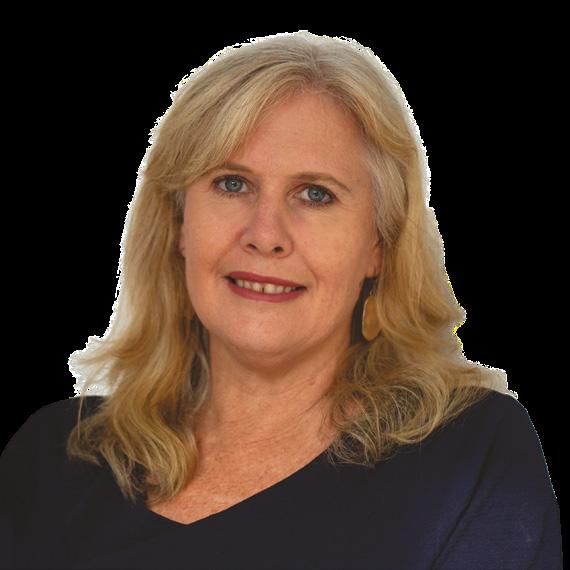
there is a little bit more flexibility. “For example, our flagship private debt fund in the UK is available on more than 30 platforms. Glacier International is one that’s been useful for us, as is Credo Capital, and more than 30 others.
“The majority of our high-net-worth clients are heavily weighted offshore,” explains Zuccollo. “The average high-net-worth individual that I see is probably invested about 80/20 – offshore 80% and 20% locally, that’s with the exception of Reg 28 money, which is forced to be more heavily invested in South Africa.”
Accessing alternatives is easier than you think
A common misconception is that alternatives are difficult to access. “I think we’re slowly changing that paradigm,” says Zuccollo. “South Africans are always a bit behind the global trend, where
 Dino Zuccollo, Head of Product Development and
Dino Zuccollo, Head of Product Development and
Distribution
most client portfolios are 20%-30% allocated to alternatives on average. In SA, we are closer to 0%-10%, in my opinion.”
Zuccollo continues, “The big thing for wealth advisers to consider is how they want to allocate. Do they want to use asset swap capacity and invest in rands but then go into one of our offshore products? Or are they able to assist their clients in externalising their wealth genuinely and then investing in hard currency offshore? We see a mix of both, and one of the big missions from our perspective is to work with wealth managers to make alternatives more accessible to South African clients. That’s big on our agenda for this year.”
Alternatives can be more complex, however, and as a concept, Zuccollo says it makes sense for any client who’s looking to access the world of alternatives to do it through their wealth manager. “We often say to clients, ‘ We’re an asset manager, not a wealth manager, we’re not experts in how to asset allocate. But contact your wealth manager and challenge them. Ask them if they incorporate alternatives into their portfolios. If they don’t, ask them why and get them to reach out to us, because we are always willing to have a conversation with any wealth manager looking to gain diversification as a benefit in their portfolio.
“That’s exactly how we would work with a wealth manager,” Zuccollo explains. “They would then contact us with any queries from clients and we would be able to advise. I talk often about pushes and pulls. We pull, so we go to wealth managers and ask them to look at alternatives. But more recently, there’s been much stronger pushes, which is when clients say, ‘I’ve been reading about the global experience. Alternatives are where the trend is now.’” In a nutshell, Zuccollo says that Westbrooke is in the business of longterm relationships. “We see wealth managers as one of our key partners for growth in a mutually beneficial manner, and we’re looking to actively grow the depths and rates of those relationships.”
OFFSHORE INVESTING www.moneymarketing.co.za 17 IMAGES Shutterstock .com
International retirement plans and pensions: A great way to hold offshore assets
BY LEAH MANNIE Pensions and Business Development Manager, Sovereign Group
Investing offshore has shifted and transformed over the years, presenting opportunities to assist individuals with their offshore objectives. South Africans are increasingly looking for secure and efficient investment structures, for various reasons, as well as for methods to preserve their wealth.
The reasons for offshore investment include making use of hard currency to hedge against the rand, with legacy planning being another key aspect.
Investing through reputable offshore retirement vehicles enables individuals to create financial strategies for their legacies and not be limited with investment options, which aids with diversification.
While South Africans are resilient, we cannot faithfully say the same about our economy at this stage. Looking particularly at offshore retirement planning, it makes
use of beneficial regulatory and taxneutral jurisdictions. Largely international retirement plans offer financial freedom in the sense that a member of the plan can freely buy and sell assets within the structure without triggering capital gains tax within the plan.
However, there is no one-size-fitsall situation when investing offshore. Regulated and licenced offshore pensions and retirement plans can provide secure investment opportunities, and transferring or contributing part of your wealth offshore does not need to be daunting, if you work with advisers and consultants who understand your financial goals and are abreast with what is taking place in South Africa and are able to recommend suitable options.
Offshore pension and retirement plans have different defining features, the first
“International retirement plans offer financial freedom in the sense that a member of the plan can freely buy and sell assets within the structure without triggering capital gains tax”
being controlled access to the funds. This is arguably the most important feature that pensions and retirement plans can have, and include the implementation of a minimum retirement age. The purpose of any pension or retirement plan is to support the member in their retirement. As such, a plan should pay benefits out when the member is of the age determined by the applicable legislation, and payments can only be transferred to the main member. Payments to third parties are not allowed.
The minimum age to request a benefit from an international retirement plan is 50, and this can be deferred until the age of 75. By the of age of 75, members should be utilising their plan and taking a benefit. The amount that a member requests will be paid from the capital amount as a return of the capital that is initially contributed to the plan. This can be any amount that the member wishes to tap into, and the remainder can remain invested.
An important factor relating to contributions is for the trustees to implement a maximum age for establishing a new plan and allowing further contributions for existing members. Therefore, the age for some


retirement plans is 75. The main reason for applying a maximum age is to ensure that the retirement plan is being utilised correctly. Establishing a retirement plan later than 75 would require a detailed rationale as, by this age, it is typically expected that a person would already have retirement planning in place.
Another feature to consider is the contribution of funds that are already taxed and cleared, and which are held offshore. Assets that are already in an offshore bank account or held in a direct investment vehicle such as an investment platform, discretionary fund manager, share portfolio, or the like, can be utilised to fund an international retirement plan. Trustees can review the investments held within this direct investment, to allow inspecie transfers.
With legacy planning being one of the key considerations for offshore planning, there are various options that can be beneficial. The main member can request, on his death, for the beneficiaries to receive a rollover of both capital and capital gains from his retirement plan to another retirement plan for individual beneficiaries, or for a discretionary trust to be established for multiple beneficiaries.
Although these plans have ancillary tax benefits, they should not be the sole purpose of offshore retirement planning. Investors will also benefit from portfolio diversification, portability, and the financial security that comes with investing in jurisdictions that are both politically and economically stable. Holding assets in stronger currencies reduces risk, and it is also beneficial to make use of well-regulated jurisdictions that have measures in place to combat fraud and money laundering.
Mannie emphasises that offshore retirement plans are subject to strict, often jurisdiction-specific, regulatory requirements. Trustees and administrators are obliged to take all reasonable steps to ensure that the interests of members are protected. Holistically, it is fundamental that retirement plans and pensions have retirement rules and guidelines that offer protection.
Everyone has a responsibility to support themselves and protect their legacy. Investing part of your wealth offshore opens possibilities and creates opportunities beyond our borders for preserving and maximising wealth in stable economies.
31 March 2024 OFFSHORE INVESTING 18 www.moneymarketing.co.za IMAGES Shutterstock .com



















KINGJAMESJHB 5587 Orbis Investment Management Limited is the appointed investment manager (“the Investment Manager”) of the Orbis Global Equity Fund and the Orbis SICAV Global Balanced Fund (“the Funds”). The Investment Manager has appointed Allan Gray Unit Trust Management (RF) (Pty) Ltd to act as a representative of the Funds in South Africa, in accordance with the provisions of section 65 of the Collective Investment Schemes Control Act 45 of 2002 (“the Representative”). The Funds trade weekly on a Thursday and unit prices as well as a schedule of fees, charges and maximum commissions can be obtained free of charge by contacting the Representative or from www.allangray.co.za. Collective investment schemes in securities (unit trusts or funds) are generally medium- to long-term investments. The value of units may go down as well as up and past performance is not necessarily a guide to future performance. The Investment Manager does not provide any guarantee regarding the capital or the performance of the Funds. The Funds may be closed to new investments at any time in order to be managed according to their mandates. Unit trusts are traded at ruling prices and can engage in borrowing and scrip lending. The Funds invest in foreign securities. Depending on their markets, trading in those securities may carry risks relating to, among others, macroeconomic and political circumstances, constraints on liquidity or the repatriation of funds, foreign exchange rate fluctuations, taxation and trade settlement. In an industry that thrives on following the latest trends in the market, we understand that following trends can be the enemy of thinking long term. We believe that any big news is likely old news, so we search for the overlooked and the unseen opportunities that lead to unmatched long-term success. Don’t just invest o shore. Invest di erently o shore with Allan Gray and Orbis. To find out more about our Orbis Global Equity Fund and Orbis SICAV Global Balanced Fund, visit www.allangray.co.za or call Allan Gray on 0860 000 654, or speak to your financial adviser. WE STUDY ALL THE LATEST TRENDS, SO WE KNOW WHICH ONES TO AVOID.

Fresh from a market rally in the final six weeks of last year, market participants began 2024 with a degree of optimism as the downward trajectory of inflation, and the potential for interest rate cuts, promised to provide some relief for a heavily indebted world. It should be noted, however, that interest rate cuts are normally associated with an economic slowdown. In such an environment, more accommodative monetary policy is needed to stimulate growth and prevent the slowdown tipping into a full-blown recession.
According to the World Bank, the global
Interest rates may be coming down but the era of free money appears over –what does this mean for portfolios?
BY SCOTT COOPER Investment Professional at Marriott
economy will grow more slowly over the next two years than it did in the decade before Covid-19, and is set for the worst half decade of growth in 30 years. This seems reasonable given elevated levels of debt, monetary policies which will likely remain restrictive throughout the course of the year, and geopolitical uncertainties that continue to restrict global growth. Further, China’s faltering economy is unlikely to be the growth-driver it was in the aftermath of the Global Financial Crisis.
While a global recession may still be avoided, evidence of a material economic

slowdown is mounting. This is good news for central bankers determined to reduce inflation, but not for the earnings and dividend growth prospects of companies – the most important driver of share price appreciation over the longer term. Unfortunately, it appears that the trade-off for lower inflation will be stalling growth.
So, how does one position portfolios for such an environment? Often in an economic slowdown it is the high-quality companies that produce business and consumer essentials that serve investors best. These companies tend to be less reliant on favourable conditions to produce reliable and growing earnings – unlike resource producers and other cyclical companies. This makes them a far more predictable investment and is precisely why they form the foundation of Marriott’s investment style. Their ability to continue growing dividends during economic slowdowns (and even recessions) is what makes them ideally suited for the months and years ahead.
Although higher rates globally create some challenges for individuals, companies and governments alike, it also presents to investors an opportunity that has been
The magnificent middle
BY JOHN CHRISTY Orbis Investment Counsellors
Amere seven stocks have accounted for nearly all the gains in global equity markets in 2023. Strip out the so-called ‘Magnificent Seven’ – Alphabet, Amazon, Apple, Meta, Microsoft, NVIDIA and Tesla – and the rest of the US stock market has been slightly negative.
This is a common pattern that has repeated throughout history. An earlier iteration of the Magnificent Seven was the ‘FANG’ stocks – Facebook, Amazon, Netflix and the company formerly known as Google. In emerging markets, the ‘BRIC’ theme – Brazil, Russia, India and China – was first floated in a Goldman Sachs report more than 20 years ago. In the 1970s , the BUNCH companies – Burroughs, Univac, NCR, Control Data and Honeywell – were the forgotten darlings of the mainframe computing era.
Whenever a small group of stocks becomes dominant, it can be a sign that opportunities are being overlooked elsewhere. Midcap stocks are a great example today. There is no official definition of what qualifies as a mid-cap stock, but the S&P MidCap 400 includes companies with market capitalisations ranging from about $5bn to $15bn. If we apply that same range to the global universe of stocks, we get about 1 800 potential ideas to choose from – and more like 5 000 if we widen the range to $2-20bn.
This part of the market is often a fertile hunting ground for contrarian investors. Mid-caps are big enough to take meaningful positions, yet are still small enough that they tend to be ignored or misunderstood by other investors. They may have very little to no weight in our benchmarks, bringing something different to the table that a passive approach would miss.
They are substantially cheaper as a group than their larger peers. For example, in the US, the S&P 500 trades at a price-to-earnings multiple of around 18 times, versus only 13 times for the S&P MidCap 400. Not only is this valuation gap wide, it is also a striking reversal from much of the past 20 years when mid-caps often traded at a premium to their larger cap peers. We have found compelling opportunities in mid-caps. While we research all of them on a bottom-up basis, there are at least a few distinct themes that emerge.
“Whenever a small group of stocks becomes dominant, it can be a sign that opportunities are being overlooked elsewhere”
The first theme would be highly idiosyncratic and entrepreneurial businesses. These are companies that started small and grew over time. It is not unusual for the founder to still be involved in some capacity and to have a significant portion of their own wealth invested alongside shareholders. Examples here include XPO, GXO Logistics and RXO – all of which trace their roots back to a single
missing for the past 15 years. With First World interest rates currently at multidecade highs, as evident in the chart, attractive hard currency returns are possible with significantly less risk.
As a result, Marriott is launching two new portfolios within the International Investment Mandate. The Smart International Income Portfolio offers both a US Dollar and Sterling option. Importantly, these portfolios hold their interest-bearing assets via accumulating ETFs and funds – this is highly efficient for South African investors as all income is automatically retained within the portfolios without incurring tax. When capital is required, the investor can simply repurchase the required amount. Although a tax charge is triggered at this point, it will be subject to capital gains tax as opposed to income tax – providing a large tax saving for individual South African investors.
These portfolios can be accessed via the International Investment Mandate (using your annual individual offshore allowance).
Smart International Income Portfolio:
Smart Dollar Portfolio (USD)
Smart Sterling Portfolio (GBP).
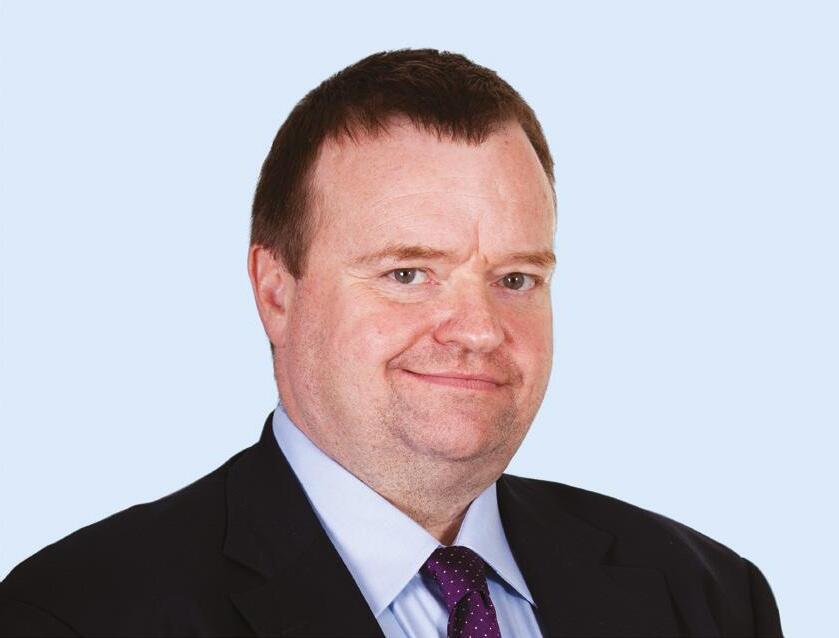
company founded by a serial entrepreneur, Brad Jacobs, who still serves as chairman of all three companies.
Another category might be termed ‘local heavyweights’. These are companies that end up in the middle only because the global equity market is so massive. This basket includes AIB and Bank of Ireland, which dominate the Irish banking system. It also includes a group of Korean financials with similarly outsized local influence: Shinhan Financial, Samsung Fire & Marine Insurance and Hana Financial. Another local heavyweight is Jardine Matheson, which controls businesses across Asia. These companies may be middleweights on the world stage, but they are not middling by any means.
While none of these shares are immune to global stock market volatility, the key variables that really matter for these businesses tend to be much more ‘micro’ in nature, usually limited to specific industry or local market developments. Through our intensive research efforts, we can get to know these companies extremely well and develop the conviction to be patient – perhaps even increasing our stake – during uncertain times.
31 March 2024 OFFSHORE INVESTING 20 www.moneymarketing.co.za

International Investment Portfolio Invest offshore in high-quality, dividend-paying companies. Contact our Client Relationship Team on 0800 336 555 or visit www.marriott.co.za More Predictable Investment Outcomes

Can your living annuity go the distance?
BY PATRICK CAMERON-SMITH Product Actuary, Just SA
Living annuity investors in the late 1990s and early 2000s have now had between 20 and 30 years of exposure to these instruments; similar to the expected lifespan of a pensioner at normal retirement ages. The nature of living annuities is that they do not guarantee a lifelong pension, and while initially protected by stronger returns, more and more pensioners would have started to see their portfolios become unable to sustain the incomes they had initially selected.
Living annuities were introduced to the market following a prolonged bull market in the 1990s, and many people
“Many pensioners remain tied to living annuities with unsustainable drawdown rates because they are reluctant to lose any of their hardearned capital if they die”
approaching retirement at the time inferred that having their retirement savings remain invested in the stock market would give them a superior income to other available options.
Living annuities quickly became popular with both retirees and their financial advisers as, in addition to offering some investment flexibility, they also allowed pensioners to have a choice of starting pension.
Then came the global financial crisis of 2008, which shocked markets, increased volatility, and depressed investments. This was soon followed by the next ten-year bull run from 2009 to 2019, and those who had invested in living annuities over this period continued to be largely happy with their investment performance and thus their pension income.
Covid-19 brought about further instability and lower market returns, followed by various wars, leading to trade restrictions, supply issues, and higher inflation.
A paper published by National Treasury in 2012* showed that at the end of December 2011, some 38% of living annuitants were drawing down more than 10% of their fund value as an income, while 21% were drawing above 15% of their funds. The
maximum permissible limit according to current regulations is 17.5%, but an industry body, ASISA, which publishes sustainable drawdown rates, recommends much lower values to last pensioners’ lifetimes.
Assuming a 6% rate of inflation, pensioners drawing a pension per annum of 10% of their investment would need to earn 17%, after costs, for their initial investment to remain the same value in real terms (after increasing prices due to inflation are considered). A return like this is not realistic at present, and as a result, the investment will likely be drawn down and the sustainability of such a pension becomes an issue, which becomes more and more evident after a few years, when the pension drawdown rates increase even further.
Many of the living annuitants who invested in the 1990s and early 2000s could have guaranteed an income for life, with specified annual increases, or targets inflation, by investing part of their retirement assets in a life annuity at retirement. Life annuities offer a higher income than the suggested sustainable rates on living annuities because policyholders pool their risk, and do not have to keep additional capital that they might never need to cover for the chance that they live a

long time. Life annuities never run out of money and give pensioners peace of mind as they grow old, no matter how long they might live.
Many pensioners remain tied to living annuities with unsustainable drawdown rates because they are reluctant to lose any of their hard-earned capital if they die, which can occur with life annuities. In practice, a legacy can be left to loved ones, while also guaranteeing lifelong income, by blending the benefits of both. Life annuities also have options to pay for a guaranteed payment period –which provides capital protection if set at an appropriate term – or an income benefit that continues as long as their named beneficiary remains alive.
A blended annuity, which has both life and living annuity components in one product, allows clients to structure a suitable combination of both elements over time, balancing the various trade-offs by and permitting additional tranches into the life annuity portfolio, as income certainty becomes more of a priority.
Sources: *Enabling a Better Income in Retirement https://www.cazenovecapital.com/en-gb/uk/wealthmanagement/insights/the-longest-bull-market-in-history-
31 March 2024 RETIREMENT 22 www.moneymarketing.co.za IMAGES Shutterstock .com
in-five-charts/
Debunking the ESG ‘fad’
BY PIET VAN DER MERWE ESG Analyst at Momentum Investments
Some misconceptions about environmental, social and governance (ESG) principles include viewing it as a recent investment strategy or dismissing it as a passing trend. Research on the quality of management (referring to governance, the ‘G’ in ‘ESG’) of bond issuers dates to more than a century ago. This is evidence that ESG principles have been in existence for a very long time and has always been important to a company’s bottom line.
What has recently changed is public awareness and publicity around ESG. Previously, only a small segment of the investor community was interested in the concept. However, societal issues such as income inequality and climate change are becoming major national and global political issues that are making media headlines. This makes it something that most people can’t ignore as it affects our daily lives and the planet we live on.
Because ESG affects politics and society, it has sometimes unfairly become part of wider cultural and political battles, which has a negative reputational effect on ESG as an investment concept. We have seen this
in the United States, but it is also surfacing in the farmers’ protests taking place across Europe, for example.
However, our focus must be on the integration of ESG to enhance long-term resilience and performance of portfolios. That is what is required for the long-term financial wellbeing of our clients.
The mass conversion of shopping malls from Eskom electricity feeds to solar power is a good example of a practical measure to reduce climate risk, taken for practical business reasons. The consequent independence from loadshedding does not only please tenants who spent fortunes on generators but also shoppers who want uninterrupted shopping. This trend is evident across the entire listed property sector.
We have seen resource and industrial companies also achieving independent electricity-generating capacity by going off-grid to alternative energy sources. A good example is the diversified resources company Exxaro. On 12 June 2022, Exxaro secured a Nersa registration for an 80 MW solar project at its Grootegeluk coal
mine, which showed its first initiative on its decarbonisation plan. The project has been fast-tracked to enable a reduction of up to a third of the mine’s scope 2 emissions, and significant electricity cost savings.
Another example demonstrating the positive impact of these principles comes from Vukile Investments in the listed property sector. They have built shopping malls in rural areas where the local population can buy from national brands. But to stimulate and develop the local economy, many smaller stalls are made available at these malls so that local small, medium and micro enterprises (SMMEs) can also sell their products, which sets up a circular local economy.
Large emitters of carbon dioxide, like Sasol, are also implementing plans to downscale carbon-intensive activities, which will have enormous societal health benefits. Simultaneously, they will assist communities to transition to the new green economy to keep those communities who are currently dependent on fossil fuel extraction economically viable in the future.
As seen from these examples, ESG is now
A closer look at the effect of climate change on return forecasts
BY TINA FONG Strategist, Schroders
SAMAR KHANNA Environmental Economist, Schroders
IRENE LAURO Environmental Economist, Schroders
Each year, Schroders’ team of economists helps investors take a longterm view with 30-year return forecasts for a range of asset classes around the world. These forecasts are unique because they include the effect of climate change, which is added on top of a set of building blocks to produce our estimates.
This year, we are expecting higher returns across most asset classes in real and nominal terms, particularly among the fixed income markets. Policymakers are likely to keep interest rates higher in response to inflation. This has been driven by major shifts in the three areas of decarbonisation, demographics and deglobalisation, known as the 3D Reset
As higher cash returns drive up returns on all fixed income assets, the risk premium for owning equities will be lower. Meanwhile, the impacts of climate change on asset returns are uneven, with winners
and losers in different geographies. Despite the substantial downgrades in emerging market returns from the incorporation of climate change, they are still expected to deliver higher returns.
Investors need to work harder
Our cash return forecasts, particularly for developed economies, are expected to increase, driven by our higher central bank policy rate forecasts. This is because central banks are likely to keep interest rates higher in response to inflation. By contrast, our global equity return forecast has moved marginally lower this year. This is primarily driven by weaker expected returns in the emerging markets and a marginal downgrade to the US equity forecast.
How we’ve incorporated the impact of climate change
We adopt a three-step approach to incorporate climate change:
Step 1: Physical impact: We focus on the physical risk of climate change by examining the impact of temperature rises on output and productivity.
• Step 2: Transition impact: We consider the transition risk by evaluating the economic impact of actions taken to

part of the normal investment decisions and operations of many companies and not ‘something out there’ or esoteric.
We support responsible investing practices to create investments that are good for our clients and the environment we live in. For example, as we invest in student accommodation through our Momentum Social Infrastructure Fund, we believe we are setting a course for South Africa to grow.
The Momentum Social Infrastructure Fund was recently recognised as the ‘Impact Project/Investment of the Year –Education’ at the prestigious Environmental Finance 2023 Impact Awards*. The fund is a perfect example of impact investing where the investment was made to make a difference to society alongside generating a financial return. We believe in creating a better future for our clients and our planet. Because with us, investing is personal.
*Source: Environmental Finance's 2023 Impact Awards, 13 December 2023
Momentum Investments is part of Momentum Metropolitan Life Limited, an authorised financial services and registered credit provider (FSP 6406).
mitigate climate change and reach net-zero targets.
• Step 3: Stranded assets: Lastly, we account for the effects of stranded assets – where we factor in losses resulting from the write-off of coal, oil and gas reserves that can no longer be exploited.
Our three climate scenarios then describe how physical risk, transition risk and stranded assets interact to collectively impact productivity, economic growth, and inflation for different economies. These are crucial for estimating long-term asset returns.
We believe that the Delayed Transition scenario is the most likely of the three scenarios and forms our central scenario. Under this scenario, policymakers delay climate action until 2030 and then introduce aggressive policies over a short span of time to limit temperature increases to 1.6°C by 2050, resulting in a disorderly transition.
Our Net Zero with Innovation scenario examines the upside to this central scenario – where proactive policies spur greater innovation and productivity, resulting in an orderly transition to limit global warming to 1.4°C , with comparatively lower economic pain.
In our scenarios, policymakers induce the transition to a low-carbon economy by raising carbon prices and internalising the cost of emissions. Carbon prices can be considered as a proxy for mitigation policy ambition and effectiveness.
Efforts to mitigate climate change will also have uneven impacts
While we anticipate investors will still be rewarded for taking more risk and investing in equities over the next 30 years, the effects of policies to decarbonise economies will create challenges for the asset class, rewarding those best placed to unpick them.
Due to the costs involved, decarbonising economies will be inflationary, because carbon pricing is widely seen as the main policy approach required to incentivise the transition to renewable forms of energy. The impact of climate change will also have more direct economic costs. Some fossil fuel reserves will simply need to be left in the ground, for instance, becoming ‘stranded assets’.
This will offset some of the benefits to equity returns from the higher inflation premium, and prove particularly consequential for emerging market equities, where the potential for losses from stranded assets is also greater. Overall, the impact of climate change on asset returns are uneven, with both winners and losers.
ESG INVESTING 31 March 2024 www.moneymarketing.co.za 23 IMAGES Shutterstock .com
Why 2024 could be the year for Emerging Market (EM) resurgence
Emerging markets have seen a decade of dramatic underperformance, but their fortunes may change in 2024 once dynamics shift in the US interest rate and currency landscape, and as key elections around the world potentially move market sentiment. This was the consensus at the ‘Investing in the Dragon’s Den –Emerging Markets Outlook 2024’ seminar hosted by Prescient and RisCura in Cape Town recently.
Speaking in his keynote presentation, Glenn Silverman, RisCura’s Investment Strategist, was optimistic that emerging markets could see an upswing in 2024. “Emerging markets have materially underperformed over the past decade and have been in a very sour spot for a long time. Looking at the MSCI Global Indexes for emerging markets versus developed markets, we can see that there is a very strong inverse correlation between the US Dollar Index and emerging markets. Typically, when the dollar strengthens, emerging markets underperform, and when the dollar weakens, emerging markets rally. Currency weakness in most key EMs has had a significant impact on EM underperformance. However, once the US cuts its rates, the USD is expected to weaken, which should then boost emerging market performance.”
Silverman highlighted that a further driver of developed market outperformance over the decade has been the much stronger growth in earnings by the former. A consequence of the strong outperformance by developed market indices is that they now trade at a near 40% premium (on average) to that of the emerging markets, which is unusually dear.
“US-China relations were unlikely to improve anytime soon, but business was likely to boom with many other parts of the world”
“Looking at inflation, we saw it pick up significantly across the globe post Covid, but then start to fall fairly sharply in 2023, both in DMS and EMs. That will allow interest rates to be cut during 2024. EMs will need the US Fed to cut first, else they risk a further weakening of their currencies. So, once the US cuts its interest rates this year, we should see an improvement in the performance of emerging markets, both from a rating, as well as from a currency perspective, i.e. a potential ‘double whammy’.
Silverman highlighted the performance of four key emerging market currencies from a South African investor perspective, viz. the Indian Rupee, the Brazilian Real, the Chinese Yuan and the South African Rand. All, bar the Yuan, a managed currency, had depreciated sharply over the decade. “From an MSCI EM perspective, China now makes up 25% of the emerging market index (down from a peak of 42% pre-Covid), yet well up from 7% back in 2003. South Africa now makes up a mere 3% of the basket (from 6% in 2023), highlighting its significant underperformance, especially in USD terms.”
Silverman also highlighted India’s dramatic outperformance of China, since around 2021. The significant rerating of India makes it appear expensive in comparison to China. Even more noteworthy, though, has been the even more significant underperformance of Chinese tech vs US tech stocks, over that same period. Both provide a potentially exciting opportunity for those contrarian, value-oriented investors.
Tian Pan, Head of Strategy and Product at Prescient China, who is a specialist in Chinese economics and geopolitics, said China’s poor equity market performance, over the past three years especially, largely due to its strict Covid lockdowns, was the biggest negative contributor to emerging market stock performance.
“We believe fundamentals always matter in the long term, and what’s interesting with China is that we are seeing a lot of fundamental numbers that are completely disconnected from the stock market.”
He said the local Chinese stock market was down by 21% since 2018 in local currency terms, looking at the local CSI Onshore Equity Market index, and if one looked


at various property indexes, it was down by between 65% and 77%. The property sector did, however, only make up about 4% of the entire Chinese equity market at its peak, and now represents only around 1% of the onshore Chinese equity market. “Property as a whole is bad, and has many direct implications on the economy, but from the equity market perspective it’s not that bad.” On the other hand, the Chinese electric vehicle market was booming, with more than half of global sales emanating from Chinese brands.
The Covid tourism slump also affected the financial market negatively, but consumer confidence is returning and spending is recovering. Enormous tourism growth is predicted for the next few years, as retail confidence has started showing signs of slow recovery. A case in point was the Chinese New Year, one of the biggest migrations in human history, where hundreds of millions of Chinese leave the cities to visit their family villages.
Pan said there were many examples of media headlines being very alarmist about China, but that it did not always align with reality. “We don’t believe Taiwan will be the next Ukraine. The pro-independence DPP party just won the elections, but lost their majority, and the likelihood of an escalating military conflict between China and Taiwan is closer to zero than any significant probability currently.”
Pan acknowledged that US-China relations were unlikely to improve anytime soon, but business was likely to boom with many other parts of the world. China was, for instance, issuing visa exemptions for businesspeople from several European countries. China is also part of the biggest free trade area in the world, Regional Comprehensive Economic Partnership (RCEP), and has applied to join other multilateral free trade agreements. These include the Comprehensive and Progressive Agreement for Trans-Pacific Partnership (CPTPP), an Asia-Pacific trade bloc consisting of 11 countries, and signifies that China is keen to increase its global trade in the near future.
31 March 2024 INVESTING 24 www.moneymarketing.co.za IMAGES Shutterstock .com
Tian Pan, Head of Strategy and Product at Prescient China

The
3
biggest market trends for online trading in 2024
BY ROGER ESKINAZI Tickmill Managing Partner
The world of online trading has changed indelibly from what it was in recent history. Several technological innovations, driven by major societal shifts, have changed the way people approach and think about important topics such as financial freedom, risk and return, and how success is defined as an investor.
Keeping abreast of these developments and understanding the intricate interplay between social dynamics and economic cycles is key to making informed decisions in fast-paced – and often volatile – market conditions.
Online trading, like many other sectors, is just as susceptible to social, economic and political movements as other sectors. This reality has become ever more pronounced in today’s always-on, interconnected world, where market developments are framed by both macroand micro-economic factors, often simultaneously.
Successful online traders are therefore holistically informed individuals, who have broad oversight of current affairs and how these issues will be brought to bear on financial markets. Although past performance and market history will continue to be a golden thread and reference point for traders, what’s happening on the ground in real-time should play just as much of a significant role in how traders make decisions.
AI-powered tools will transform investment thinking
With artificial intelligence (AI) being the buzzword of 2023, the year ahead will see greater levels of AI adoption in online trading circles. According to Google Cloud research, as much as 50% of
trading systems and data providers have now incorporated AI-powered services into their offerings.
In South Africa, platforms such as Tickmill are part of the constituent that has embraced the possibilities of AI. For example, Tickmill’s Acuity Trading Tool draws on national and international news features, diverse data sets, and natural language processing to provide traders with an accurate overview of market sentiment. Among other uses for these kinds of tools, AI can help traders identify opportunities as and when they arise.
Hate it or love it, AI is here to stay. Our job as online traders is to find ways to use AI to gain a competitive edge. AI will never be ‘human,’ and has several obvious shortfalls in its lack of understanding of complex processes that underpin basic human behaviour. It is, however, a powerful tool to have in your investing toolbox – an add-on that can bring a new, fresh perspective to your forecasts and investment decisions.
remaining coverage gaps.
Vodacom, for example, plans to invest over $3bn towards upgrading network resilience and coverage in rural regions in South Africa over the next five years. Apart from the obvious benefits this offers online traders in terms of choice and convenience, it’s also worth contemplating the impact of this on the democratisation of trading.
With greater mobile penetration in South Africa comes an inevitable lowering of barriers to entry into the marketplace. People in outlying or rural areas, for example, can now be welcomed into the fold, providing more South Africans with the opportunities that only a select few previously enjoyed.
“As much as 50% of trading systems and data providers have now incorporated AI-powered services into their offerings”
Greater mobile penetration will increase market reach
Mobile connections in South Africa are at an all-time high. And, according to a recent report focused on Sub-Saharan Africa and conducted by the Global System for Mobile Communications Association (GSMA), several leading mobile network operators have renewed their commitments to closing the
The broader implications of this on important national objectives such as financial inclusion are encouraging. In 2024, we will likely see more trading platforms creating mobile apps for their users. We’re also likely to see platforms that have apps, creating more user-friendly interfaces and prioritising the user experience even more than they have done in previous years.
This is all good news for aspiring traders who enter the investment world using a mobile device. Through mobile apps, we have the potential to reach more people, address more knowledge gaps, and provide a higher level of technical support.

Young investors will drive change
The country’s titans of industry have their sights set on the Millennial and Gen-Z generations, which have now entered the fray of financially active South Africans. The maturation of these younger generations will undoubtedly play a pivotal role in shaping the future of numerous spheres within finance, including how investment decisions are made and the sentiment around investment behaviour in general.
These emerging generations –as numerous sources continue to demonstrate – are markedly different from their older counterparts in several ways. For example, findings by youth market expert InSites Consulting reported that ‘Zoomers’ are more inclined to selfeducate on matters relating to personal financial management.
These young people are also frontrunners when it comes to investing in emerging innovations such as cryptocurrencies, demonstrating their openness to new financial instruments.
The report also found that members of Gen Z are deeply concerned about issues relating to social justice, sustainability, and economic development. To cater to the needs of this rising generation of investors, online trading platforms need to frontline the importance of social impact.
As these younger generations come of age, their influence on various facets of finance will become clearer and will continue to reshape investment norms and sentiments.
INVESTING 31 March 2024 www.moneymarketing.co.za 25 IMAGES Shutterstock .com
We are what we measure –getting to grips with volatility
BY JUSTIN FLOOR Head of Equities at PSG Asset Management
Investing, by its very nature, requires managers to take on some form of risk. However, risk is a complex concept, and how it is defined can impact the decisions fund managers make. At PSG Asset Management, we believe the most crucial risk for most clients is not meeting their return objectives over the long term. This can occur because clients are invested in a fund that underperforms the objective (or experiences a permanent capital loss), or because a client exits a fund at the wrong time (potentially due to short-under performance), crystallising losses.
Asset managers must therefore strive to find a balance between maximising long-term performance and ensuring that short-term performance does not disappoint investors to such an extent that they divest. However, these objectives can frequently be in conflict.
The history behind the focus on volatility
While Harry Markowitz introduced ‘volatility’ as a proxy for risk in 1952, market participants only started thinking of volatility as risk after the 1987 Black Monday market crash. JP Morgan developed a report estimating the ‘maximum’ the bank could lose on any given day. This report used historical volatility as an input, and led to the development of Value at Risk (VaR). In 1993, JP Morgan made its methodology freely available, ultimately leading to historic volatility becoming the de facto measurement of risk in the investment industry.
Shortfalls and risks of using volatility as the sole measure of risk
Actual portfolio risk is incredibly difficult to assess, so it’s no wonder the finance industry has embraced one easyto-calculate measure, despite its numerous shortfalls and flaws. However, relying too heavily on volatility as a risk measure has significant drawbacks:
• Volatility is backward looking
Historical volatility has a correlation with market moves – when markets fall volatility rises, while in bull markets volatility tends to flatline or decline. Using volatility as a risk measure implies assessing risk as higher after a fall in the market (and rise in volatility). Conversely, it would imply risk is lower after a market rally. This is counterintuitive – we believe the price you pay for an asset is a critical driver of both potential performance and the risk of permanent capital loss. Historical data supports our view:
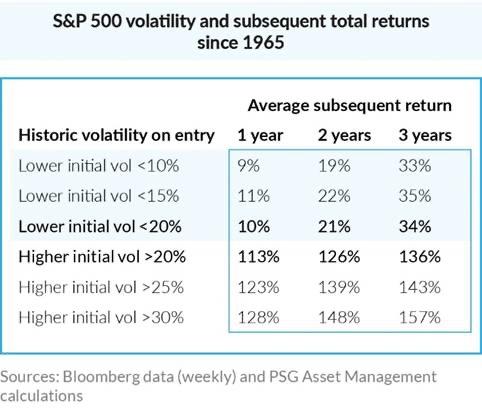 JOHN GILCHRIST, Co-CIO at PSG Asset Management
JOHN GILCHRIST, Co-CIO at PSG Asset Management
• The underlying assumptions are flawed
Using volatility as a risk measure implicitly assumes that market returns are normally distributed. However, when comparing actual annual S&P 500 returns to a normal distribution with the same mean, it is evident that there are more actual observations around the mean and in the left tail than a normal distribution assumes. This, in turn, means that many assumptions about risk based on volatility are flawed.



These assumptions can be even more flawed when volatility is used to assess the risk of multi-asset funds that, by design, do not display normal pay-off profiles.
• It does not distinguish between upside and downside volatility
Focusing only on volatility ignores the distinction between desirable upside volatility, and volatility associated with losses. On occasion, funds seen as high risk due to elevated historical volatility are being unfairly penalised for lumpy upside performance. Downside deviation addresses this by measuring only the volatility associated with negative returns.
• It is short-term focused
Ideally, investors should focus on risk measures consistent with their relevant time period. While monthly volatility may be relevant for selected investors, most investors in multi-asset or equitycentric funds have a longer-term time horizon. Measuring risk based on monthly moves creates a short-term focus with potentially negative implications for investors’ ultimate returns.
• It is not necessarily a reliable predictor of the potential to lose money
There have been numerous examples of instruments and funds that have displayed extremely low volatility, were seen as low risk, but whose value precipitously dropped, sometimes to zero. Two high-profile examples: Credit Suisse’s Additional Tier 1 (AT1) bonds which were written off by the Swiss Financial Market Supervisory Authority as part of the forced rescue merger with UBS in March 2023
• Bernie Madoff’s Ponzi scheme: Of the US$65bn of purported client assets, less than US$15bn in cash deposits were returned to investors (a 77% loss).
“Relying too heavily on volatility as a risk measure has significant drawbacks”
• Fund volatility can be reduced artificially
Some funds and instruments apply opaque mark-tomarket processes, which can result in artificially low volatility of returns. We believe an excessive focus on volatility is currently contributing to demand for credit investments at unattractive spreads in the local market, and is also driving greater investment in illiquid bespoke products. Volatility as a measure of risk is a potentially misleading indicator for funds that make extensive use of these instruments.
What is the antidote?
While historical volatility as a proxy for risk is clearly flawed, it is relatively simple and objective and is likely to remain a key part of any investor’s due diligence processes. However, we believe that it is crucial that risk be considered holistically, with both a quantitative and a qualitative assessment.
Leading multi-managers, institutional investors, discretionary fund managers and sophisticated advisers all conduct extensive due diligence processes on investment managers, gaining insights into how they construct portfolios. We believe this is crucial to ensure that risk is assessed properly. In addition, while an individual fund may appear risky on a stand-alone basis, each fund needs to be assessed in conjunction with other funds it may be combined with in a solution. This is particularly relevant for funds managed on a similar basis to those of PSG Asset Management, as we do not construct our funds using benchmarks or strategic asset allocations, and hence can add significant diversification benefits.
31 March 2024 INVESTING 26 www.moneymarketing.co.za
Luno expands offering to include more DeFi coins
BY CHRISTO DE WIT Luno’s Country Manager for South Africa
Luno has added three new cryptocurrencies to invest in that are prominent in decentralised finance (DeFi). Aave (AAVE) connects lenders and borrowers directly, without the need for intermediaries. It is one of the largest cryptocurrency lending platforms, with currently over $6bn secured across supported blockchains.
Curve (CRV) lets investors trade stablecoins and other cryptos for lower fees. Curve has gained popularity as a liquidity provider for stablecoins like USD Coin and USDT.
MakerDAO allows investors to temporarily lock up their crypto in return for Maker’s stablecoin called Dai. It’s attracted major investors, including Andreessen Horowitz, one of the world’s leading venture capital firms.
Christo de Wit, Luno’s country manager for South Africa, explains,
“DeFi is an innovative, automated system that enables financial services like loans, savings, insurance or trading on public blockchains. By adding these new coins, which are prominent in the emerging world of DeFi, customers can learn more about DeFi, which has the potential to change finance.
“As cryptocurrencies are more than just monetary coins and form the building blocks of a new decentralised digital
“Our customers are keen for opportunities to diversify their crypto portfolios in this innovative space”
economy, our customers are keen for opportunities to diversify their crypto portfolios in this innovative space.”
What is DeFi?
Cryptocurrencies reward participants in decentralised ecosystems for carrying out activities that keep the system running smoothly and securely. These decentralised ecosystems enable and facilitate different industries, from financial services to gaming.
DeFi is one of the more mature use cases for crypto technology. The number of global DeFi users was estimated at roughly 4.8 million in 2022, set to exceed 22 million users by 2028 at current growth trends. The total value locked in DeFi reached more than $52.71bn last year.
DeFi has several use cases, the biggest to date is decentralised lending and borrowing. Collateral is used as
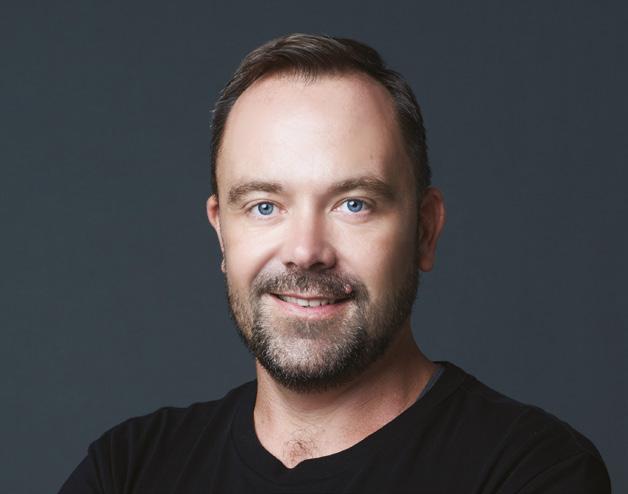
a safeguard, much like in traditional financial services, to ensure lenders will be repaid if a borrower defaults on the loan. However, transactions in DeFi are generally automated and enforced by smart contracts. As a result, they protect both lenders and borrowers before they lose out on money.
Says de Wit, “Luno undertakes a thorough process when adding assets for customers to invest in or trade, based on standards for safety and legitimacy. Luno, however, does not ensure the future potential of any investment. We provide clear and unbiased content to aid an investor’s decision-making, but we tell our 12 million customers to always do their own research and exercise good judgement before investing. Due to the volatile nature of cryptocurrency, we advise clients to not invest more than they are prepared to lose.”
Meddling in others’ affairs: The Department of Home Affairs’ ‘Tax Policy’ amendment
The Department of Home Affairs’ (the DHA) recent amendments to Immigration Regulations are likely to spark controversy among South African taxpayers, especially expatriates working abroad who are still diligently fulfilling their South African tax obligations. These amendments, which are aimed at enabling remote working in South Africa, seem to grant preferential tax treatment to high-earning foreigners over local and expatriate South Africans.
Unwarranted interference?
The DHA’s amendments appears to extend an invitation to foreigner workers earning above R1m, to work remotely in South Africa for up to 6 months within any 12-month period, while not requiring them to register for or pay tax to SARS. In contrast, expatriates working abroad pay full tax on their earnings in excess of R1,25m, as well as being subject to onerous tax administration requirements.
The amendments raise questions about the DHA’s authority insofar as passing laws that have serious effects on the tax base. South Africa’s robust tax legislation framework has undergone years of refinement by National Treasury, in furtherance of increasing South Africa’s revenue collection, and improving the levels of tax compliance. By effectively passing a tax law to the benefit of high-earning foreigners, the DHA may be overstepping its jurisdiction and encroaching into the domain of National Treasury.
Undermining SARS’ tax collection abilities SARS’ authority to administer and collect tax appears to be undermined by the DHA publishing the ‘Draft Second Amendment to the Immigration Regulations, 2014’ on 8 February 2024, which states that:
“ work conducted, as contemplated in section 11(2) of the Act, for a foreign employer on a remote basis: Provided that—
(i) such foreigner earns no less than the equivalent of R1,000,000.00 (One Million Rand) per annum;
(ii) if the visa is issued for a period not exceeding 6 months within a 12-month period, the foreigner will not be required to register with the South Africa Revenue Service ; and
(iii) if the visa is issued for a period longer than 6 months within a 12-month period, the foreigner must register with the South Africa Revenue Service...” (our emphasis)
The juxtaposition between the stringent approach adopted by SARS towards expatriates leaving South Africa to work abroad, and the DHA’s amendments affecting foreigners entering South Africa to work remotely, presents a potential inequality among taxpayers. This seemingly contrasting stance between government departments further adds to the view that there is an apparent lack of cohesion in regulatory frameworks, and raises questions regarding the
equitable treatment of expatriates in relation to tax compliance obligations.
Unilateral decision making
The decision by the DHA to amend Immigration Regulations, presumably without consultation with National Treasury or SARS, reflects a lack of coordination and oversight. Such regulatory changes should undergo thorough consultation and review to assess their implications for tax policy and administration, contributing to regulatory inconsistency and undercut the effectiveness of tax laws. If SARS were indeed consulted with, it would be interesting to note the minutes of such consultation, being held for the public interest.
This change by the DHA comes across as blind to those South African expatriates who have not financially emigrated, or followed other routes to formalise the cessation of their South African tax residency with SARS. Notwithstanding that these expatriates work and live abroad, they must still contribute to the fiscus, and the ‘running costs’ of South Africa. This contrasts with foreigners working remotely within South Africa, who reap the benefits of the expatriates’ tax, and do not contribute at all. We might see an increase in the cessation of tax residency of those expatriates currently abroad, and those planning on working abroad in future.
CRYPTO CURRENCY TAX 31 March 2024 www.moneymarketing.co.za 27
Using geospatial data to manage climate change
BY ZELDA ELS Technical Specialist, Santam
Mitigating the increasing effects of climate change has become a top priority for South African insurers who have collectively paid billions of rands in related damages over the past five to 10 years. The increasing frequency and severity of weather events – such as heavy rainfall and resultant flooding – threatens the sustainability of insurers who must protect the integrity of their balance sheets to continue paying claims for years to come. Harnessing the power of technology and geospatial data offers a solution to reducing this risk and ensuring the longevity of cover.
To illustrate the impact of natural hazards, the devastating April 2022 KwaZulu-Natal (KZN) flood was one of the deadliest natural disasters ever to be recorded in South Africa. It was the largest single flood loss event on Santam’s books in its 105-year history, with R4.3bn paid in claims. Total losses were estimated at R54bn, of which R27bn were covered by the insurance sector. It resulted in R17bn in damages to essential infrastructure in the province, causing major disruption.
It was the third significant severe weather event in KZN in just four years, with the previous major flood since the 1980s occurring in 2019 and before that, in 2017. Multiple other less severe (but still significant) floods occurred in various parts of the country that same year. Several floods occurring in parts of the Eastern and Western Cape during 2023 also resulted in extreme losses.
Santam is merging this intelligence with technology to pioneer a new risk management underwriting tool to assist underwriters in de-risking against exposures. The Santam Underwriting Viewer, developed with geographic information systems (GIS) technology (also known as spatial intelligence) overlays geocoded addresses with scientific data sets to determine the exposure to specific perils at a given location – for the first time allowing underwriters to see all the data layers they need to be aware of to apply appropriate policy conditions to a property.
Abroad, US, UK and EU insurers are well versed in using similar technology to aid with accurate loss forecasting and proactive risk management regarding hurricanes. All policies are geocoded, and models have been developed to determine the threat of approaching hurricanes to estimate potential losses before a hurricane has even hit the ground.
“Insurers must therefore focus on developing solutions to the risks imposed by the increasingly volatile environment”
Santam is one of the first insurers locally to deploy this kind of technology to solve problems and enable underwriting at an individual parcel/property level as opposed to postal code level. The risk data is used to classify parcels into risk categories, with measures being applied according to the probability of flood in a particular area. Our aim for the future is to reach the international insurers’ level of science-backed decision making with the Santam Underwriting Viewer.

developing a veldfire risk data set in the Viewer in correlation with Santam thatch accumulation on its personal lines policies where thatch risk applies. Small, localised studies have been completed; however, the methodology needs to be expanded at a national level to identify exposures to high-risk areas.
Factors that help determine the level of risk include the type of vegetation surrounding a property, history of wildfire, topography data such as slope, land cover and historical fire claim incidents in the area. The study results will enable the development of a fire hazard map and inform property mitigative measures and an appropriate fire risk rating to be applied to a property.
As short-term insurance helps people, businesses and municipalities recover from the economic fallout following a loss event such as a flood, it is an increasingly critical cog in the economy. Insurers must therefore focus on developing solutions to the risks imposed by the increasingly volatile environment. Technology can assist in doing so.
Using the 105 years of expertise and data at its core,
While clients are unaware of the application of the technology on the back-end during our underwriting process, it carries immense benefits as it allows for site-specific underwriting and prevents attaching policy conditions to properties outside of the determined hazard area. Neighbouring plots can carry entirely different levels of risk, depending on their proximity to a flood line and elevation above a water source, for instance.
Beyond floods, Santam is in the early stages of

Not only does this data benefit insurers and policyholders, but in certain instances it can provide valuable intel for the public sector. We are working with local, district and provincial municipalities to provide them with risk management support and capacity building as part of our Partnership for Risk and Resilience (P4RR) programme. The aim is for the collective data to eventually extend beyond insurance needs, to be used by, for example, spatial planners to inform spatial planning guidelines where there are data gaps in the planning process, to benefit communities. For example, in cases where there has been a lack of motivation and/or funding from district municipalities, Santam has carried out flood-line estimation studies for some of South Africa’s largest rivers, including the Crocodile and Vaal rivers.
This highly targeted approach to risk profiling is vital in combating the corrosive effects of climate change, and if adopted more widely by insurers, can help ensure the future sustainability of a thriving insurance industry, functional communities and the economic growth of our country.

31 March 2024 SHORT-TERM INVESTING 28 www.moneymarketing.co.za
IMAGES Shutterstock .com
KwaZulu-Natal flood damage, April 2022
What can South Africans expect from medical aid schemes this year?
BY LEO DLAMINI Bestmed CEO and Principal Officer
The medical aid industry is at a crucial turning point, driven by innovative technologies, and an evergrowing need for inclusive and affordable healthcare solutions. This sector is likely to witness the emergence of a more collaborative ecosystem as a result of partnerships between tech businesses, insurance companies and healthcare providers – those that offer an integrated experience – to align to shifting consumer demands.
Increasing health costs
The cost of providing healthcare cover is increasing faster than the economic growth rate and the consumer price index (CPI), which renders medical scheme membership unaffordable for the majority of South Africans. Balancing the rising costs of healthcare and affordability for members is a delicate and critical aspect of running a sustainable medical scheme. Driving the increase in costs of healthcare is also the utilisation rate (claims ratio) by the members. This is partly due to a rise in elective procedures post-Covid , and the more aggressive clinical interventions. Much of this, we believe, is a consequence of people neglecting their regular health screenings, which is now translating into more serious health issues The biggest cost driver in healthcare in 2024 continues to be hospitals,

followed by specialists. Although the number of hospital admissions are currently lower than they were in 2019/2020, the average cost of admission has risen substantially. This is why it is very important to establish collaborative ecosystems that are inclusive and beneficial to all stakeholders.
Personalised prevention over cure
Now more than ever, consumers are demanding transparency, simplicity and responsiveness when it comes to their medical aid, which means a focus on more digitally integrated platforms for easier access to service, information and support. Digital health technologies, including telemedicine, AI-driven diagnostics and personalised medicine options, are increasingly shaping the medical landscape, allowing for more efficient and tailored healthcare solutions. There is also a growing trend towards preventive healthcare. Medical schemes are, therefore, focusing more on wellness programmes, health screenings and preventive measures to improve members costs and reduce downstream/future costs.
The next frontier of trends and predictions emerges for the ever-changing healthcare landscape
BY ALEESHA REDDY Head of Product Development at NetcarePlus
As we journey further into 2024, the healthcare landscape is evolving at an unprecedented pace, shaped by a confluence of factors ranging from technological advancements to the profound impact of climate change. Understanding and adapting to these trends is crucial for both healthcare providers and consumers. Here, we delve into five key healthcare trends for 2024 and beyond:
1. Empowering choices
It is apparent that medical scheme members opting for flexibility in their selection of specialists and hospitals will continue to face substantial out-ofpocket claims expenditure. Navigating this financial terrain, the significance of having comprehensive gap cover cannot be overstated. It plays an important role in providing members with a financial safety net, addressing unexpected hospital co-payments, and bridging shortfalls in specialist costs. In this era of evolving
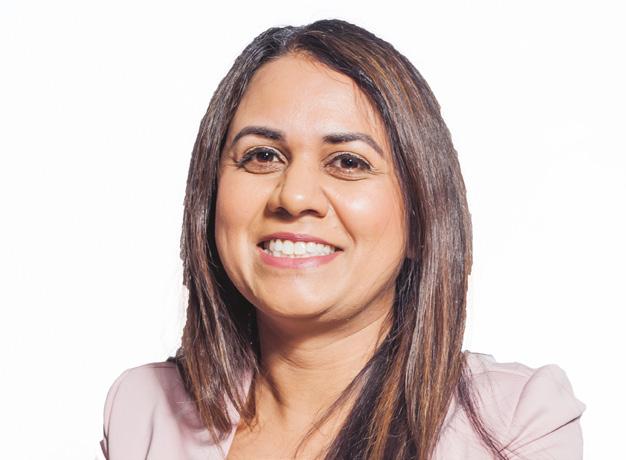
healthcare dynamics, ensuring a balance between flexibility of choice and financial preparedness becomes paramount, placing gap cover as an indispensable ally in the pursuit of optimal and sustainable healthcare outcomes.
2. Streamlining resources
In a strategic move aimed at curbing unnecessary day-to-day healthcare spending and mitigating the potential misuse of benefits, a multitude of medical schemes and primary healthcare providers have instituted mandatory pre-authorisations upon reaching specified benefit limits.
Simultaneously, they’ve tightened controls surrounding network utilisation,
This also includes recognising the importance of mental health, and providing broader coverage and services, which include access to counselling, psychiatric treatments and support programmes.
Retaining control while innovating for the future 2024 will see Bestmed mark 60 years since inception. Bestmed is South Africa’s fourth largest open medical scheme and the country’s largest self-administered entity.
It’s an opportune time to take stock of how we’ve fared thus far and what the outlook is. Embracing technological advancements to create an integrated healthcare ecosystem, as well as focusing on delivering innovative health solutions that are competitively priced, are key. Equally important is the ability to adapt our offering to the changing healthcare needs of our members while also maintaining our Personally Yours brand promise.
Bestmed achieved over 20% growth rate over the last few years, which can be attributed to the organisation’s ability to retain existing members, attract new members with our value-for-money product offering, as well as being responsive to members’ needs. As a selfadministering medical scheme, we pride ourselves on being more agile and responsive to members
It is going to be a tough year as economic growth remains flat and disposable income under sustained pressure from high interest rates and inflation. The national election and the outcomes therefrom will most likely impact all of us in some form or another. As medical schemes, we must remain focused on providing value for money from our offerings and actively working to improve the health of members.
focusing notably on GP and dental benefits.
While these measures seek to enhance the sustainability of healthcare systems, it’s important to acknowledge that such additional controls may inadvertently lead to treatment delays or heightened claim rejections, particularly when members deviate from the prescribed scheme rules. As we navigate this delicate balance between fiscal responsibility and optimal patient care, it becomes imperative to foster a nuanced understanding of these evolving dynamics within the healthcare ecosystem.
3. Virtual care: A catalyst for transformation
The prevalence of virtual care is set to surge across diverse disciplines. While its adoption has historically been prominent in nurseled and GP consultations, a transformative shift is underway as virtual care gains traction among healthcare professionals such as dentists, dermatologists, and allied healthcare practitioners.
This extends beyond conventional use, encompassing tasks like patient diagnosis, treatment plan formulation, and seamlessly complementing in-person care. The cost-effectiveness inherent in virtual care positions it as a proactive tool, poised to be leveraged by individuals for the effective management of their day-to-day benefits. As the synergy between technology and healthcare deepens, virtual care emerges as a cornerstone in fostering accessibility, efficiency, and patient-centricity in the evolving landscape of healthcare services.
4. Climate change and healthcare
According to Council for Scientific and
Industrial Research (CSIR) we’re facing the global onset of an El Niño period – a pivotal juncture unfolds, amplifying the risk of heatwaves and wildfires. This climatic shift heralds a significant implication for healthcare, with projections indicating a potential upswing in hospital admissions throughout 2024. Anticipated repercussions include an elevated incidence of cases related to smoke inhalation, burns, and heatrelated illnesses, notably heat stroke.
As we navigate this intersection of climate and healthcare, a proactive approach to managing and mitigating the health impacts of environmental shifts becomes paramount in ensuring the resilience and wellbeing of communities.
5. Precision and progress
The year 2023 witnessed a notable surge in the upgrading of robotic surgery systems across numerous hospitals. These advanced systems, surpassing their predecessors in versatility, are now capable of assisting with a broader spectrum of medical procedures. This signals a new era in surgical interventions, epitomising the commitment of healthcare to embrace cutting-edge technologies for the betterment of patient care and recovery.
The transformative impact of roboticassisted procedures extends to enhanced patient outcomes, characterised by heightened precision and reduced invasiveness, translating to shorter recovery times. The momentum gained in the previous year sets the stage for a continued ascent in 2024 and beyond, with the anticipated rise in the occurrence of robotic-assisted procedures.
HEALTH INSURANCE 31 March 2024 www.moneymarketing.co.za 29
Is it time to
reframe the conversation around the NHI?
BY DEVAN MOODLEY Regional Manager Healthcare, NMG Benefits
If we're being honest, even once the president finds the pen, it's not going to miraculously change the healthcare landscape in South Africa. Even if he signs it tomorrow, it doesn't mean every South African will have immediate access to the healthcare facility of their choosing. There’s a long process that needs to take place. Even after signing, it will take at least five years before the Bill can be enacted, and this will have to be broken down into six phases.
We, as stakeholders, met with the Minister of Health in October last year and he was quite engaging. The facts are clear: due to the complexity of it, the NHI can take anything up to 15 years to implement. And a lot of things can happen in 15 years. There will be three national elections, so who knows who will be in power in the future? They may have their own idea of what universal health coverage will look like.
Back to the origins
The NHI is an ANC policy ideology. Its aim has always been to create universal healthcare, which can be defined as access to proper healthcare, regardless of socioeconomic status. Universal healthcare is what the World Health Organisation has called on countries to implement. In South Africa, we've actually already got universal healthcare because everybody has access to healthcare regardless of their socioeconomic status. If I'm not on medical aid, I can use public facilities. The Health Market Inquiry clearly found that South Africa already provides universal access to healthcare to its citizens through a combination of publicly available services and regulated private markets.
There's also the International Labour Organisation’s Social Protection report of 2017, which stated there are no coverage gaps in South Africa for the two most important things – an inability to pay for healthcare services or a lack of access. The issue comes down to two things: the public sector, which the government runs, and the private sector. The public sector requires proper governance and management capacity. The private sector is efficient but needs to curtail costs and increase affordability and they are working towards this.
So, the way to solve the healthcare issues in South Africa is to uplift the governance in the public sector and manage capacity in terms of resourcing. And the private sector must create more ease of access and affordability with products such as Primary Healthcare. When more people join medical aids, it means there are less people using healthcare in the public sector, and less pressure on the system, which could result in better quality healthcare and outcomes for all.
Is the Department of Health really struggling?
The other issue about the NHI is it revolves around populism. It’s called politics of grievance or victimhood and blame. The victim in this case is the Department of Health and the public sector patients. The Department of Health says: ‘We're struggling. We don't have the proper budget. We don't have the proper medical personnel; we don't have the proper wages. We’re the victim.’ We could argue that the provincial public health expenditure from 2010 to 2020 has increased by 51%. Yet our Health Department says the biggest issue is that there's no increase in the provincial budgets for healthcare.
The second part revolves around public sector medical personnel and equipment. From 2006 until 2020, the number of professional nurses increased by around 36%, medical practitioners by around 39%, ambulances around 32% – yet the government's saying we don't have proper resourcing or personnel. Are personnel being rewarded appropriately? We've got a snapshot from 2006 to about 2017, and there's been a 55% increase in wages in real terms in the DOH, which is around CPI plus 4.5%. There are resources, there is funding for provincial public health expenditure and there is money for wages because people are getting increases. What is the
problem? The problem is governance and the resource planning. It's simply about management and the fact that there isn't any accountability.
The NHI could potentially be the biggest state-owned entity — and we all know state-owned enterprises are failing right now, with corruption and other malfeasance being largely to blame. Why would the government want to nationalise healthcare? Where's the trust?
The realities we face
The truth of the matter is there's no money for the NHI. The Minister of Finance was silent on the issue in his 2023 Budget speech, and he’s previously stated there's no funding. That’s the financial reality. The political reality is there’s an election coming up. We don't know who's going to govern SA in the future and each political party has their own idea of what universal healthcare is. Then there’s the legislative reality because 11 Acts will need to be repealed during the implementation phases.
The biggest concern is the risk of grand corruption. The Minister of Health oversees all members of the board and committees. Will the NHI have political appointees? We see news around cadre deployment and what this has done to SOEs. Chief Justice Zondo stated

HEALTH INSURANCE 30 www.moneymarketing.co.za IMAGES Shutterstock .com
in his state capture report there should be a complete revamp of appointments in state-owned enterprises. President Ramaphosa called it a massive system failure, and yet he has said that the NHI would still be run by political appointees.
One of the most important issues that needs to be considered is the potential brain drain. We value our healthcare professionals. We think we have the best in the world. We could be stripping the country of critically needed skills, as the controversy around the Bill creates the kind of environment where people are considering immigrating.
How it would work
If the president signs the bill the first five years will see an administration that must be created to develop and run the fund. The funding’s executive authority will bid for funds from the main budget and set up mechanisms for providing payments. There’s shifting of certain conditional grants like HIV, AIDS and TB from the Department of Health into the fund.
The first phase speaks about contracting in with hospitals. All establishments must be certified by the Office of the Health Standards Compliance (OHSC), which rates hospitals and whether they are compliant in terms of their standards. Government facilities in the past have struggled to be compliant and most do not meet the necessary requirements as set out by the OHSC. With the NHI coming into play, public facilities must be compliant with the OHSC by at least 80%. But why can't we do it now? What makes anyone think it's going to happen only when the Bill is signed?
“In South Africa, we’ve already got universal healthcare because everybody has access to healthcare regardless of their socioeconomic status”
The last part of initial implementation states that the only time a new form of taxation will be considered to fund the bill is in a favourable economic environment. SA is struggling with economic growth and we are not a growing economy currently.
Trying to make sense of it all
The NHI Bill is, however, open to interpretation. It states that medical schemes cannot cover services reimbursable by the NHI. But at the same time, it states that to obtain reimbursement, you’ll have to follow the NHI referral pathway. You will have to use contracted service providers. If you don’t want to do that and choose your own provider, you can’t claim from the NHI, but can you claim from your private health insurance? So, it appears to accommodate medical schemes being able to fund any services not reimbursable by the NHI due to patients choosing not to use the NHI pathways. This requires clarity.
To date, 132 amendments were made to the Bill, which were probably minor, but this was in lieu of 338 891 submissions from stakeholders and interested parties.
Could the private sector do better?
The private healthcare sector caters to about 9 million people out of a population of more than 60 million. You're looking at less than 1/6 of the population. From a responsibility aspect, the private sector should focus on cost and affordability. Several lower income medical schemes have been introduced in recent years to accommodate more segments of the market. The problem with those products, however, is that they must cover prescribed minimum benefits (PMBs) and that's why the costing goes up. However, a different type of medical insurance, Primary Healthcare, has been introduced, and this is available from as little as R300 per person per month as they don’t have to cover PMBs Corporate employers in the private sector can make a difference to their company and greater SA by subscribing to these products for uninsured employees. Even if they just pay half, they are taking people out of the public healthcare sector and into the private sector for less than

R10 per day. Employees will still have to use the public system for inpatient procedures but will have access to private providers for outpatient day-to-day benefits.
There are other products, such as group accident cover, that companies can take out for employees, and these come in at below R100 per employee per month. That's where we come in, as we will find a viable solution for employers based on their needs and affordability.
We believe there are more opportunities to explore and more conversations to be had What if the private healthcare sector with their Primary Healthcare affordable products partners with government? A simple example will be at home: if you're paying for an insurance product for your domestic worker and it was seen as tax write-off, more people will subscribe to this as there are benefits all around. But with the low tax base, I don't think this will be considered. In the interim, it's up to corporate South Africa and companies like us to approach our clients and offer solutions to get them credible cover.

All players need to come together. The private sector and public sector can do more. The industry needs to figure out: how do we keep these customers onboard and loyal and not just hold them at gunpoint. We just need to get the government to do their part and the private sector to do theirs, and there could be something powerful because, in essence, universal healthcare exists. I believe it just needs some major tuning on one side and some fine-tuning on the other. It’s all about finding a better way.
NMG Benefits is an employee benefits company and our job is to find solutions for our corporate clients as well as individuals regarding employee benefits. These include medical aid, pension and provident funds, gap cover, primary healthcare and employee assistance programmes. We work in conjunction with your employee benefits provider. We are a stakeholder in the industry and we want to see it succeed.

31 March 2024 www.moneymarketing.co.za 31 © Copyright MoneyMarketing 2024 ADVERTISING EDITORIAL DISTRIBUTION & SUBSCRIPTION PUBLISHING TEAM Johannesburg Office: New Media, a division of Media24 (Pty) Ltd, Ground Floor, 272 Pretoria Avenue, Randburg, 2194 Postal Address: PO Box 784698, Sandton, Johannesburg, 2146 Cape Town Head Office: New Media, a division of Media24 (Pty) Ltd, 8th Floor, Media24 Centre, 40 Heerengracht, Cape Town, 8001 | Postal Address: PO Box 440, Green Point, Cape Town, 8051 Tel: +27 (0)21 406 2002 | newmedia@newmedia.co.za CONTACT FELICITY GARBERS Email: felicity.garbers@newmedia.co.za Tel: +27 (0)78 758 6227 GET A 12-MONTH SA SUBSCRIPTION FOR ONLY R494! (SA postage only, including VAT) SUBSCRIBE TO ACTING EDITOR: Sandy Welch sandy.welch@newmedia.co.za ART DIRECTOR: Julia van Schalkwyk SUB EDITOR: Anita van der Merwe DIGITAL CONTENT CO-ORDINATOR: Mpolokeng Lechoba KEY ACCOUNT MANAGER: Mildred Manthey Cell: +27 (0)72 832 5104 mildred.manthey@newmedia.co.za Felicity Garbers felicity.garbers@newmedia.co.za GENERAL MANAGER: Dev Naidoo HEAD OF COMMERCIAL: B2B: Johann Gerber Johann.gerber@newmedia.co.za PRODUCTION MANAGER: Angela Silver angela.silver@newmedia.co.za GROUP ART DIRECTOR: David Kyslinger DIGITAL MANAGER: Varushka Padayachi Unless previously agreed in writing, MoneyMarketing owns all rights to all contributions, whether image or text. SOURCES: Shutterstock, supplied images, editorial staff. While precautions have been taken to ensure the accuracy of its contents and information given to readers, neither the editor, publisher, or its agents can accept responsibility for damages or injury which may arise therefrom. All rights reserved. © MoneyMarketing. No part of this publication may be reproduced, stored in a retrieval system or transmitted in any form or by any means, photocopying, electronic, mechanical or otherwise without the prior written permission of the copyright owners. © MoneyMarketing is not a financial adviser. The magazine accepts no responsibility for any decision made by any reader on the basis of information of whatever kind published in the magazine. MoneyMarketing is printed and bound by CTP Printers - Cape Town MANAGEMENT TEAM CEO NEW MEDIA: Aileen Lamb COMMERCIAL DIRECTOR: Maria Tiganis STRATEGY DIRECTOR: Andrew Nunneley CHIEF FINANCIAL OFFICER: Venette Malone CEO MEDIA24: Ishmet Davidson Published by New Media, a division of Media24 (Pty) Ltd.



































 BOBBY WESSELS Manager: Corporate and International Tax, AJM
BOBBY WESSELS Manager: Corporate and International Tax, AJM











 BY SANDY WELCH Acting Editor, MoneyMarketing
BY SANDY WELCH Acting Editor, MoneyMarketing

 Dino Zuccollo, Head of Product Development and
Dino Zuccollo, Head of Product Development and




























 JOHN GILCHRIST, Co-CIO at PSG Asset Management
JOHN GILCHRIST, Co-CIO at PSG Asset Management






















